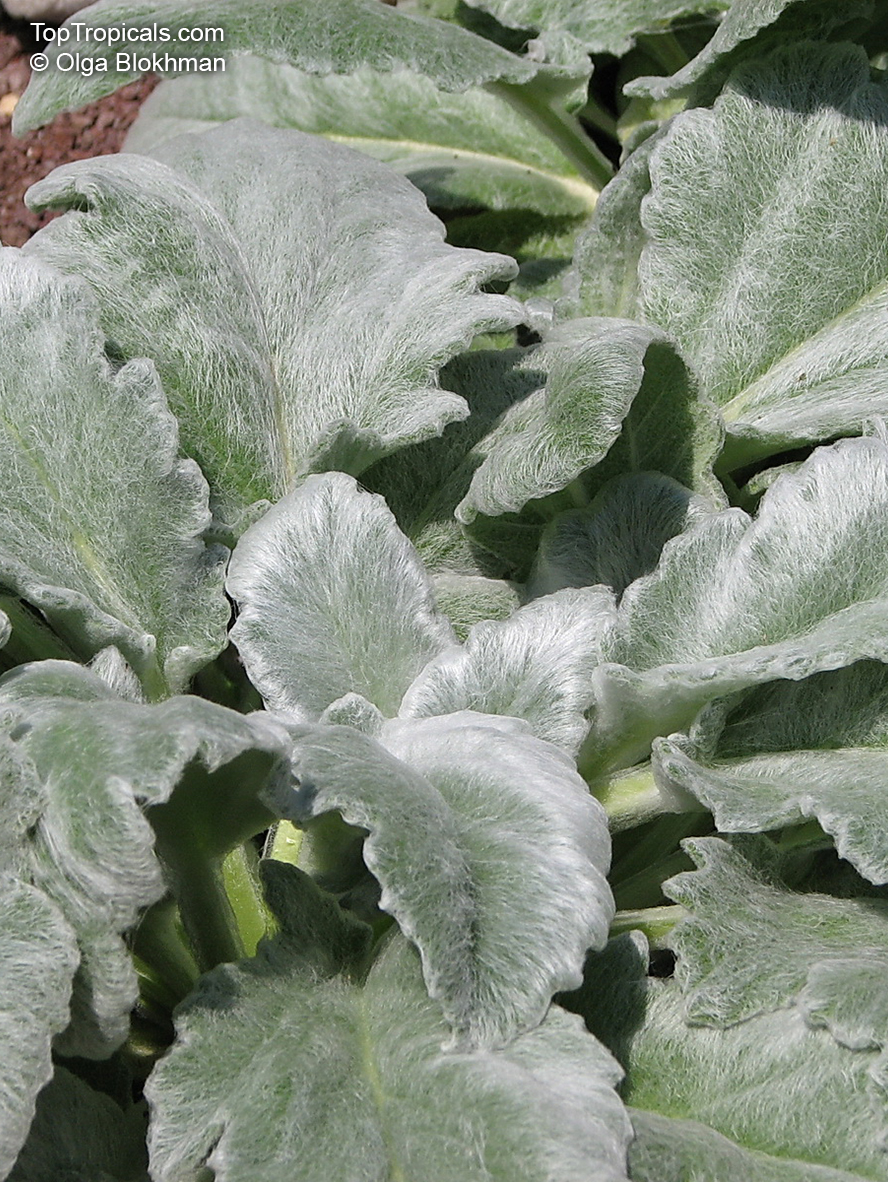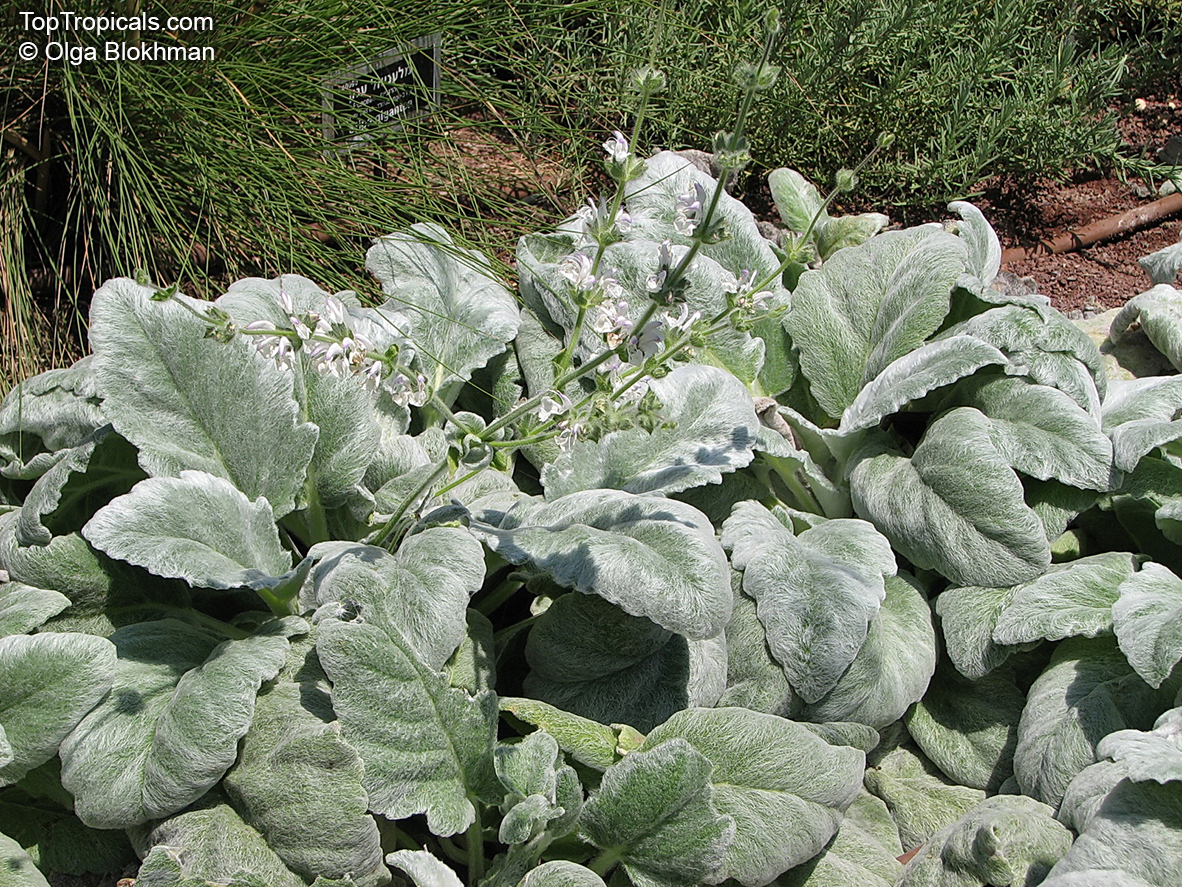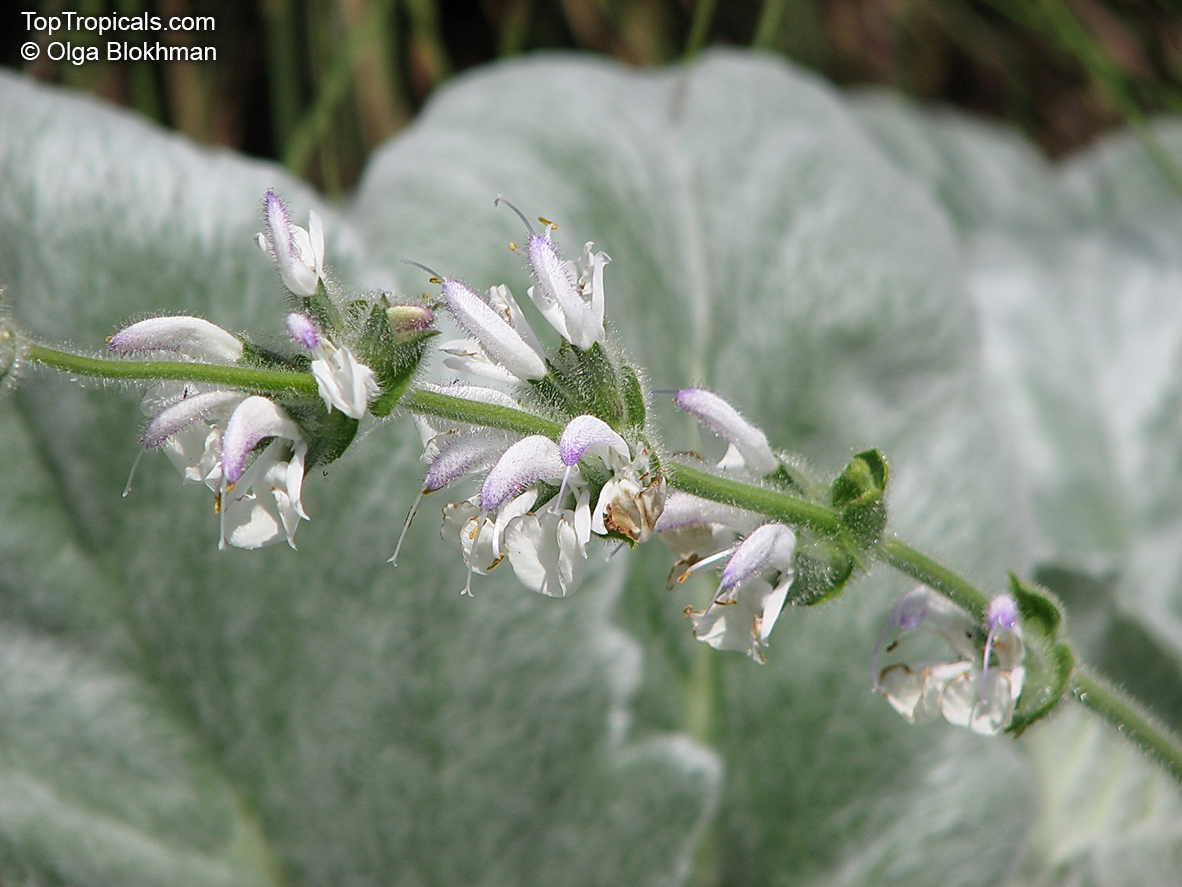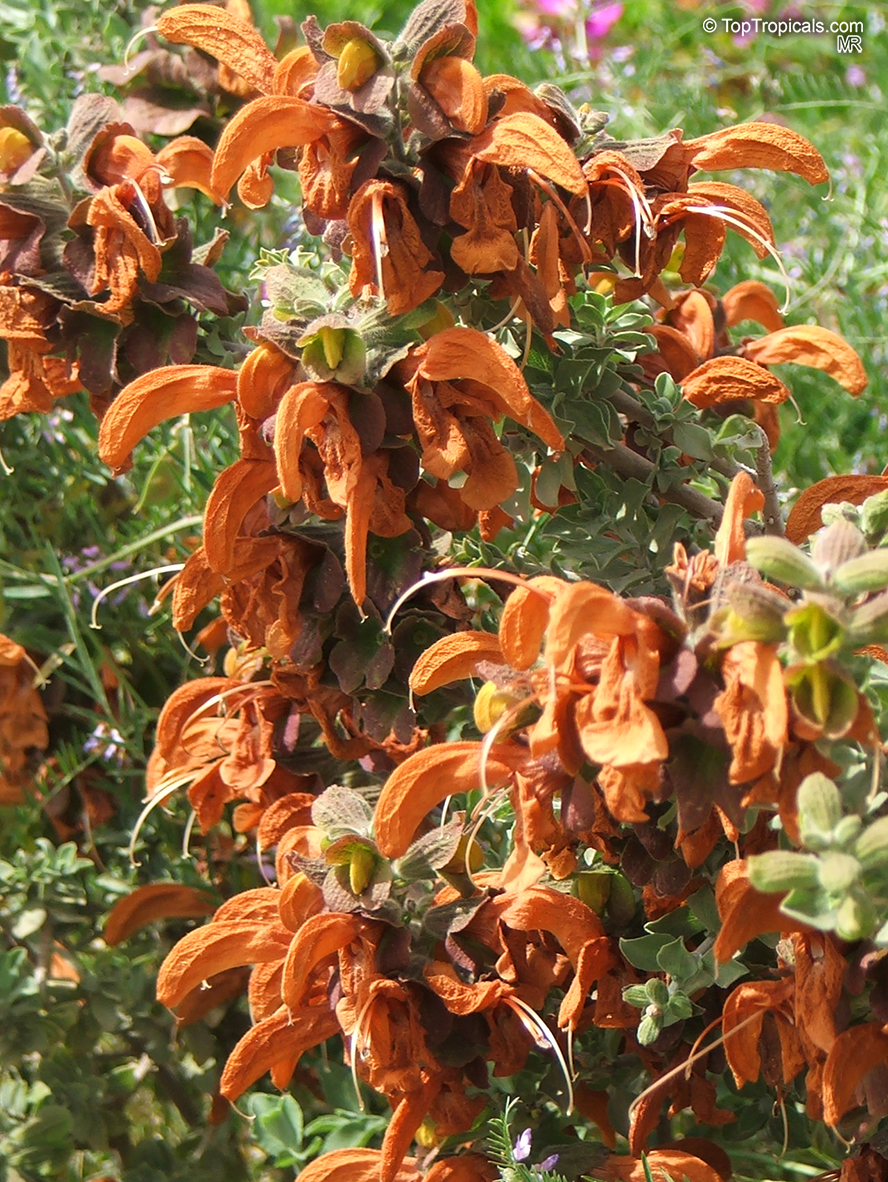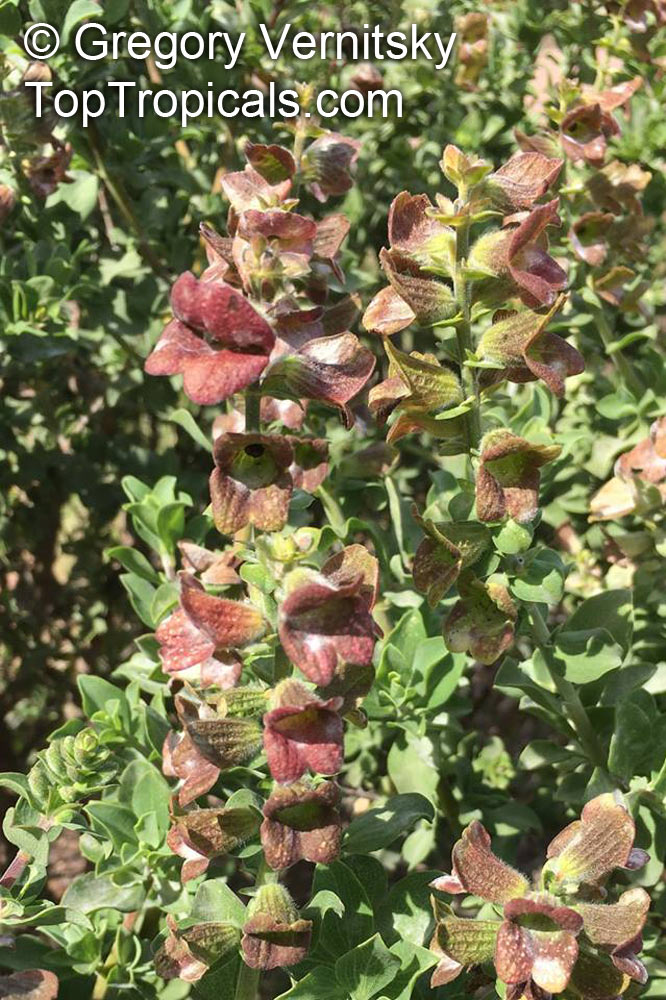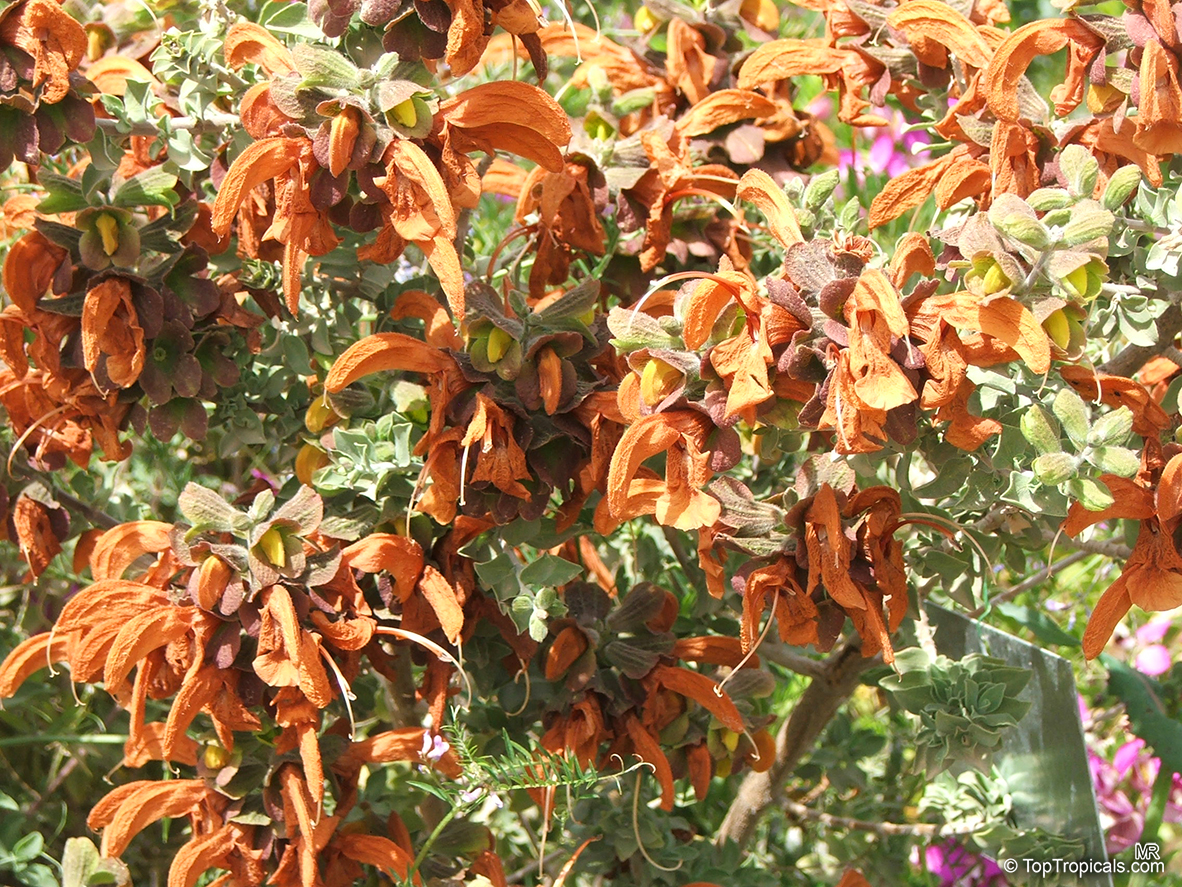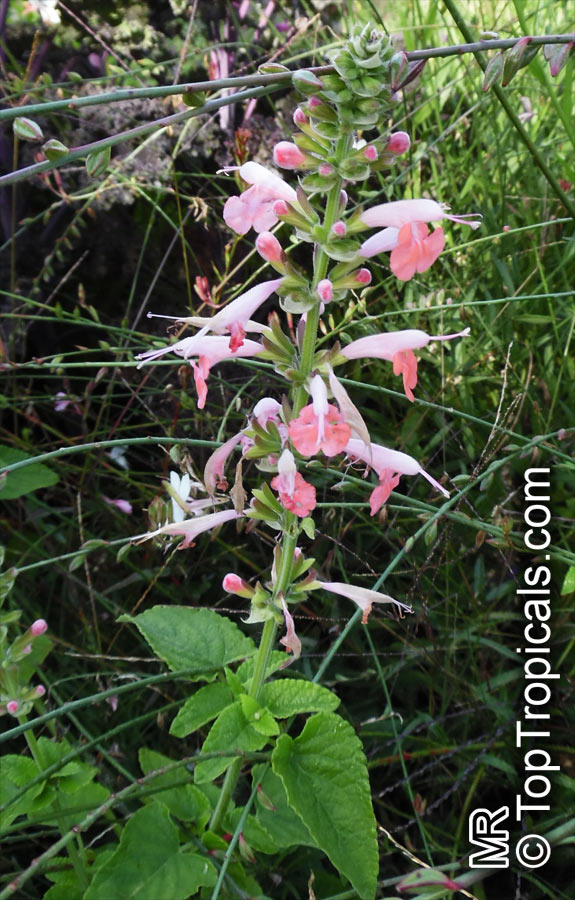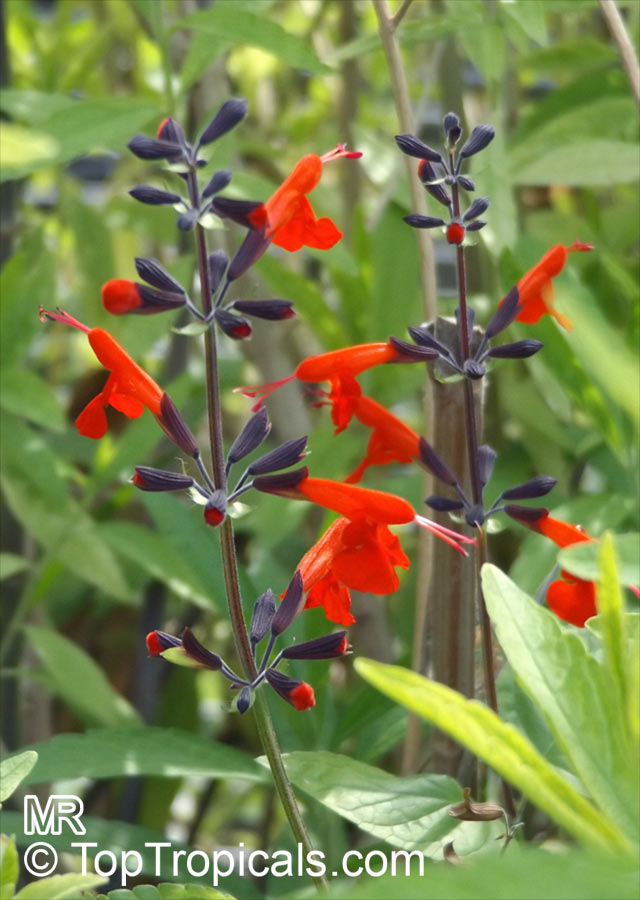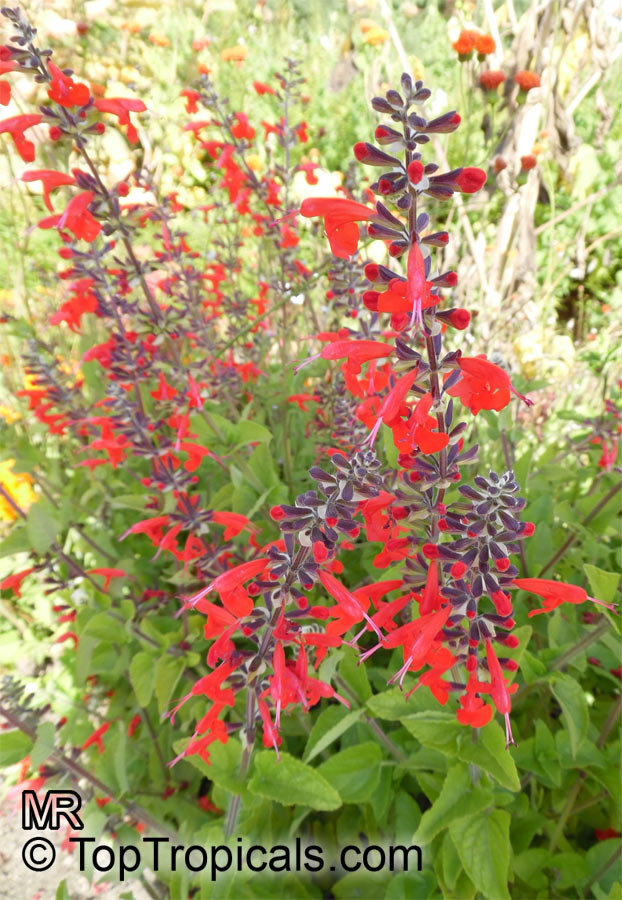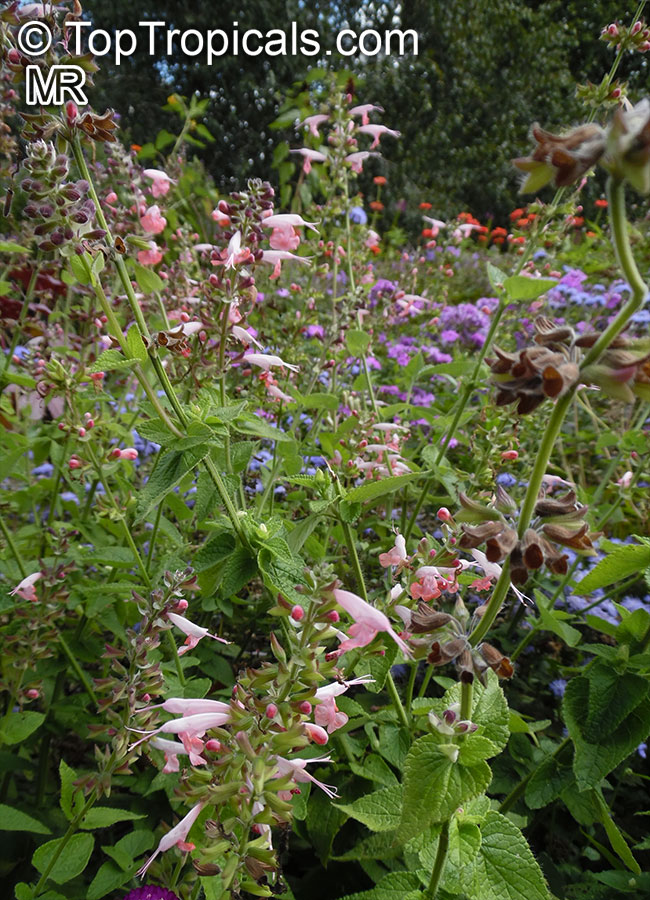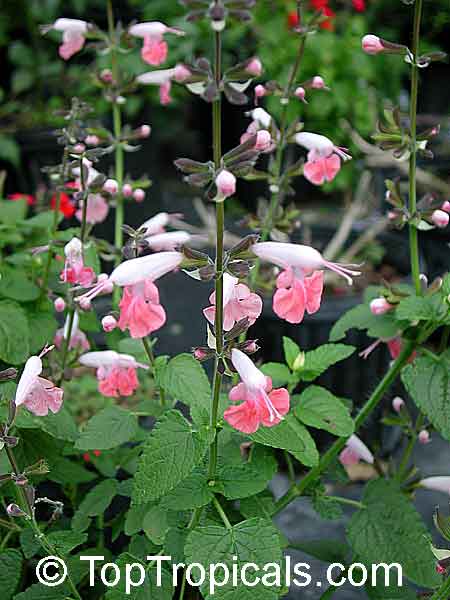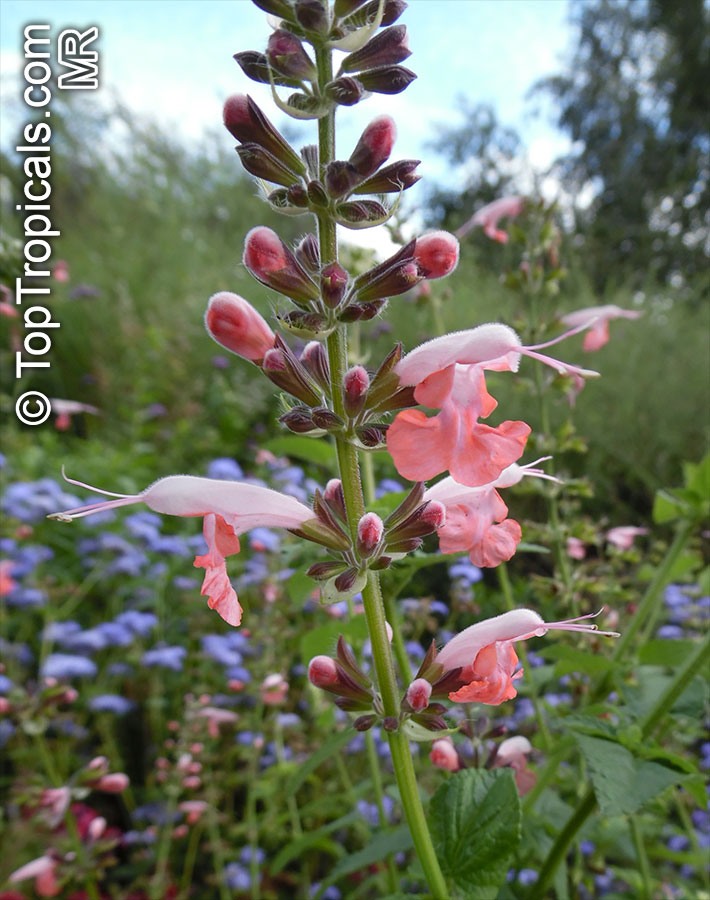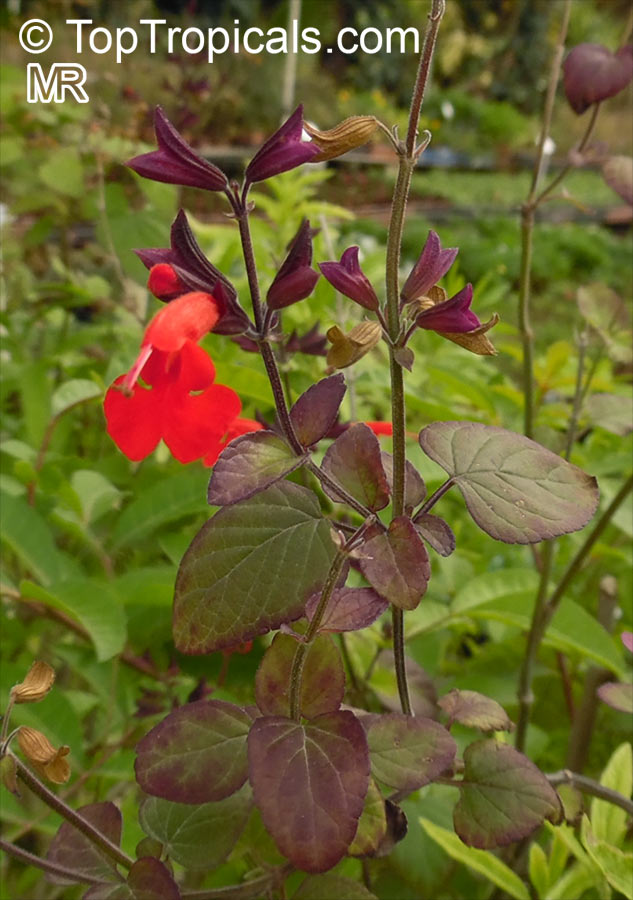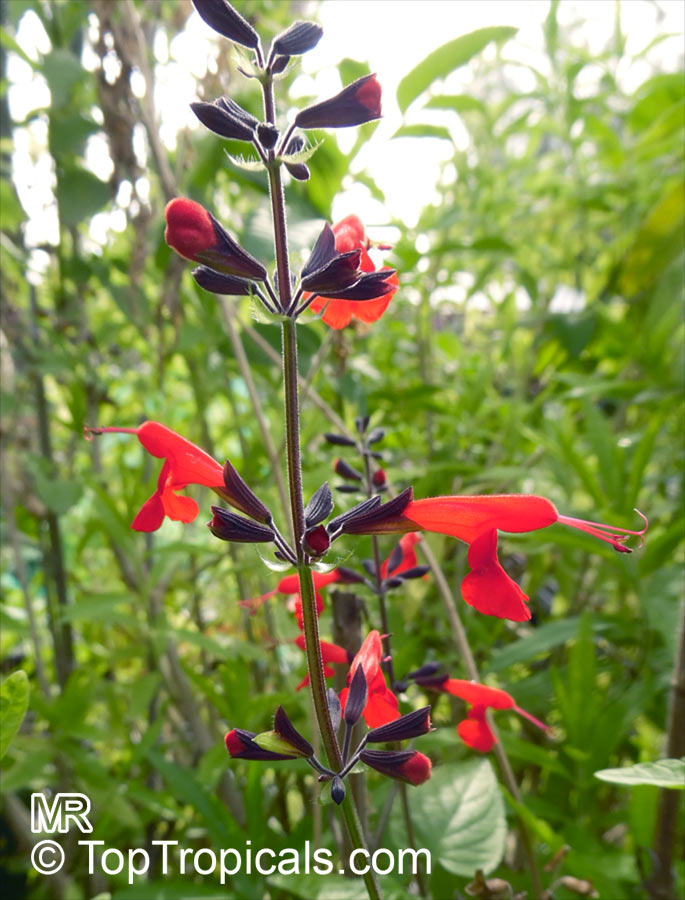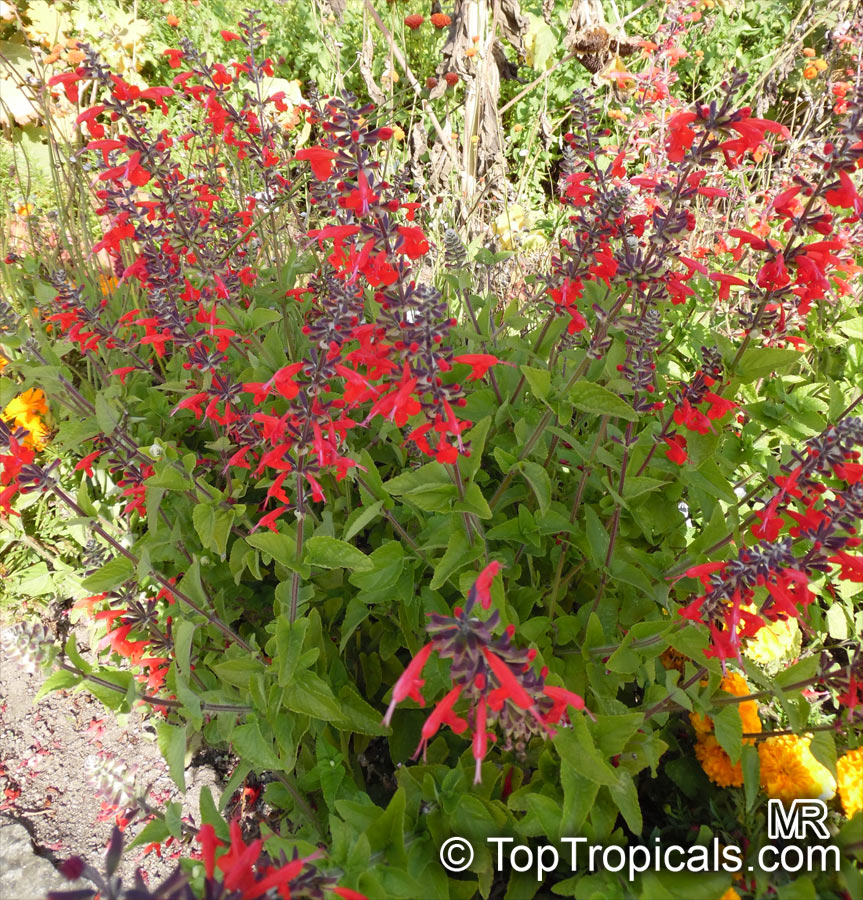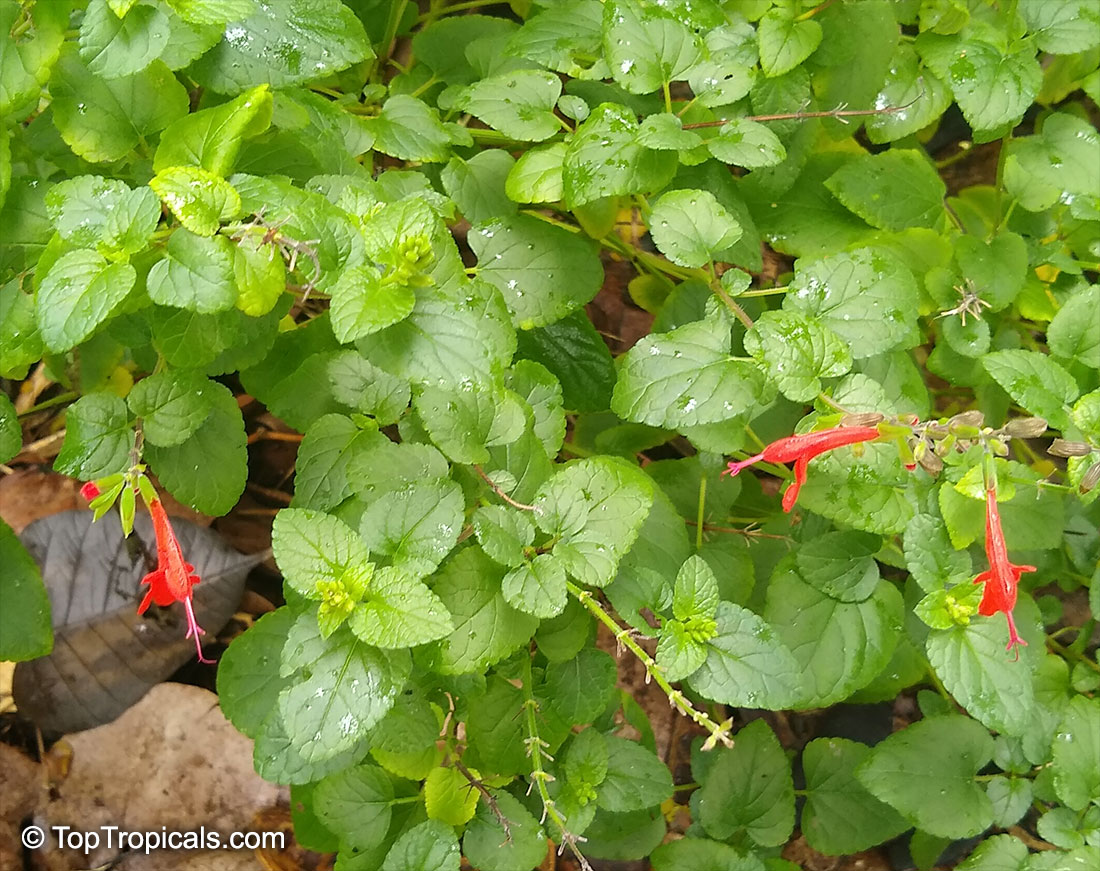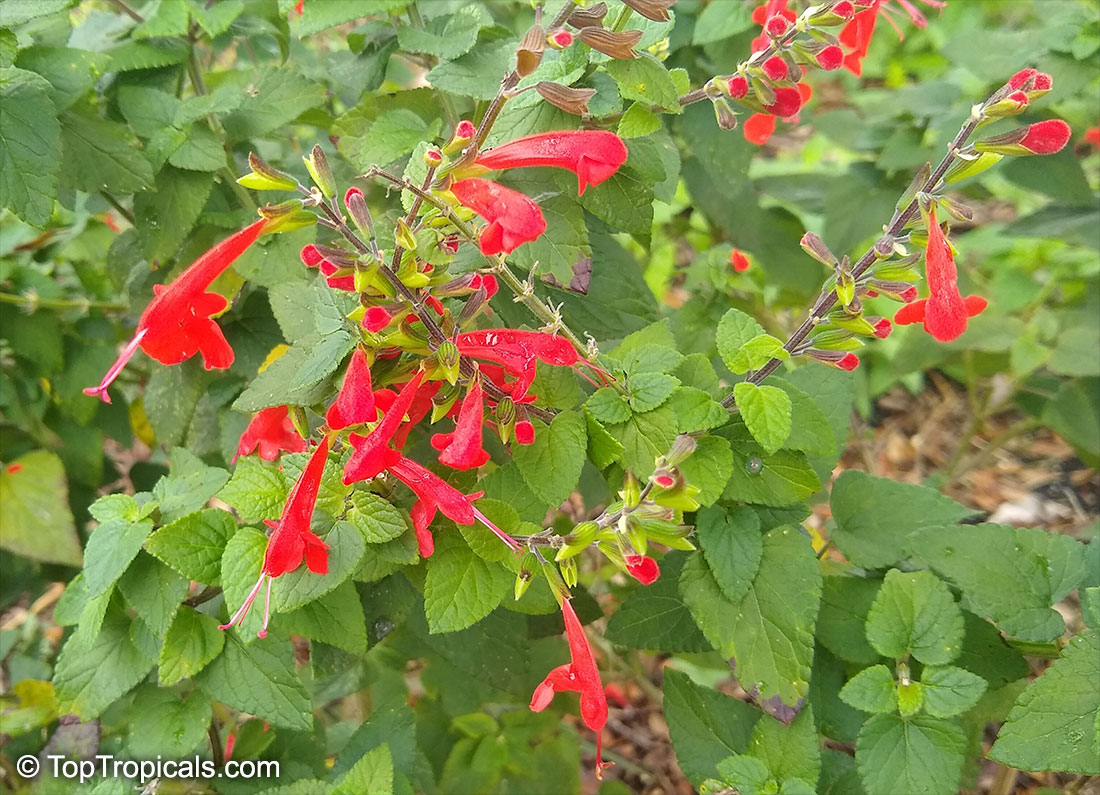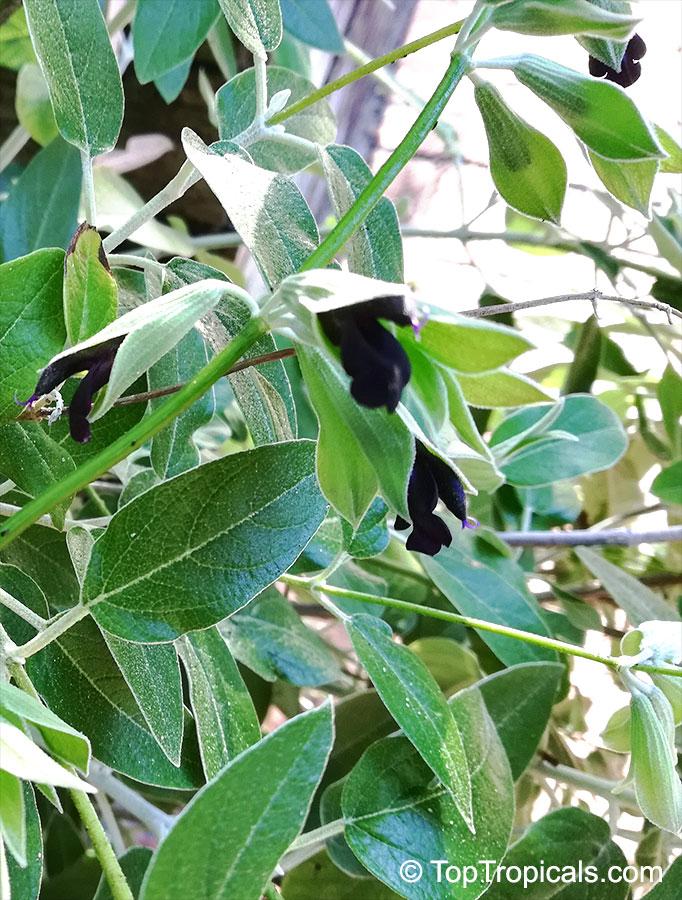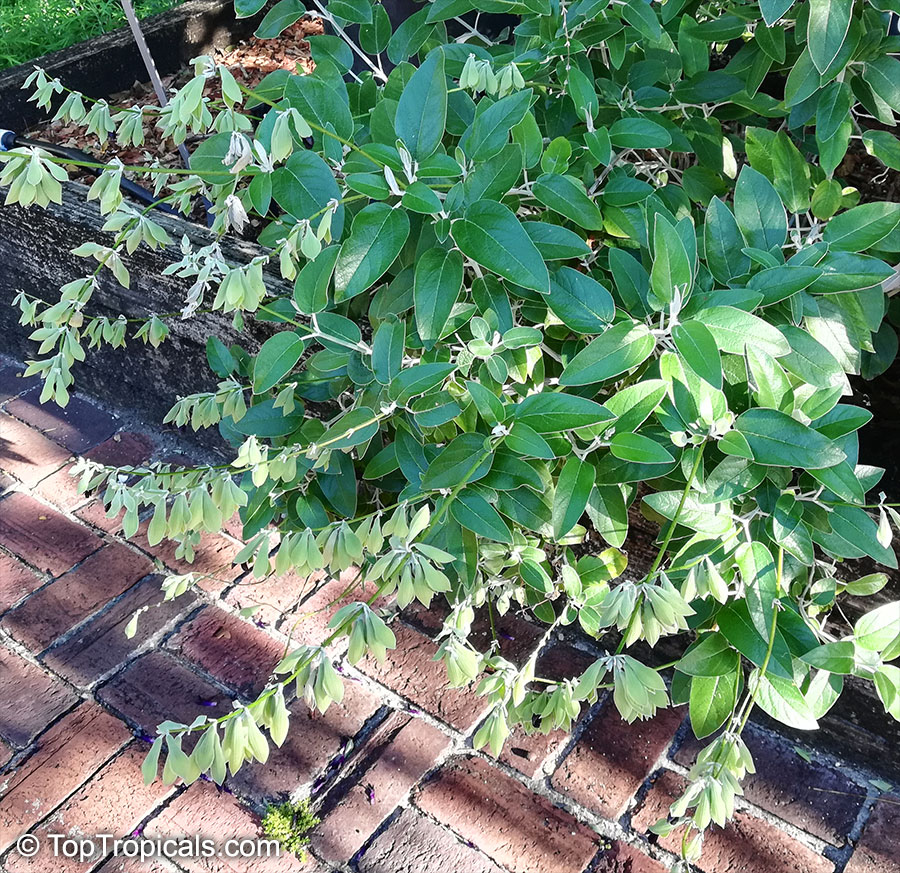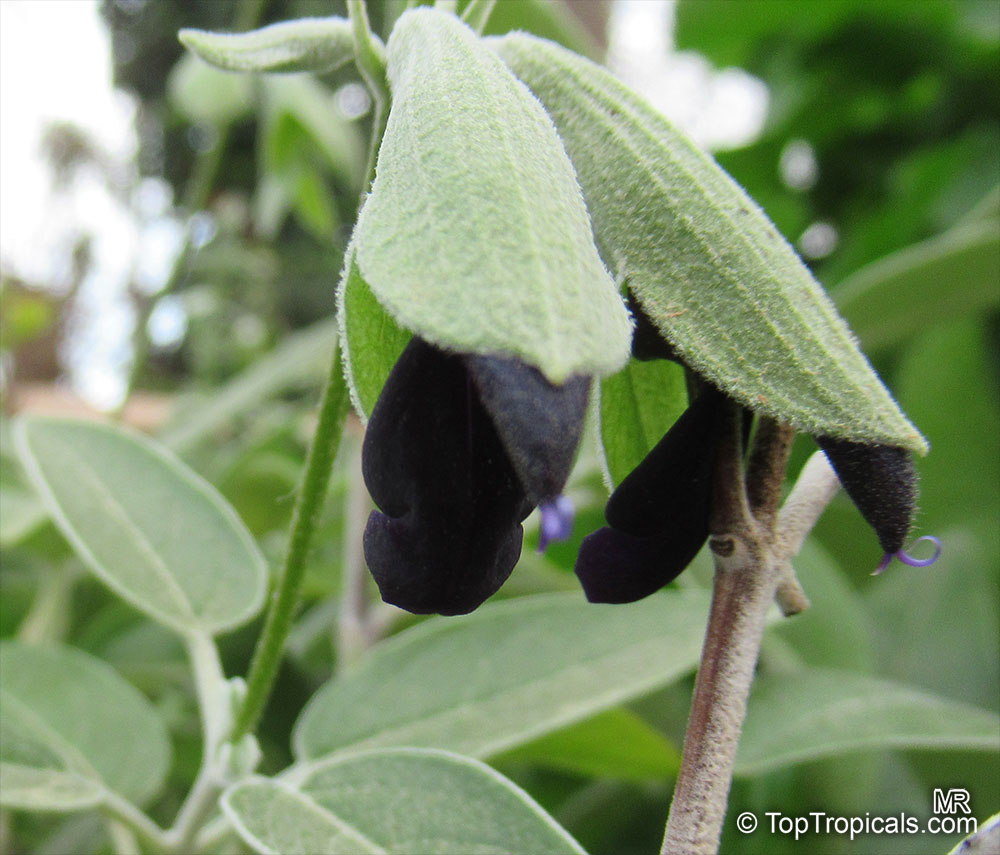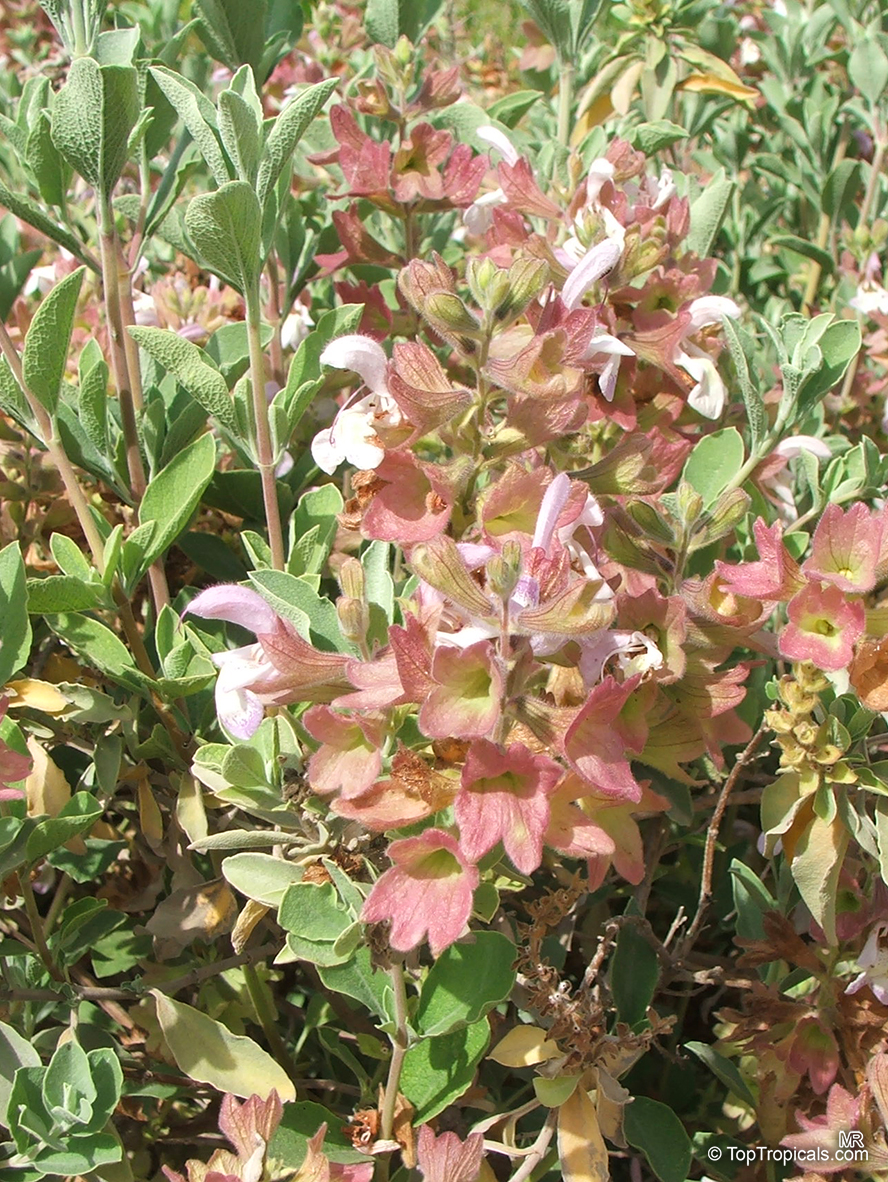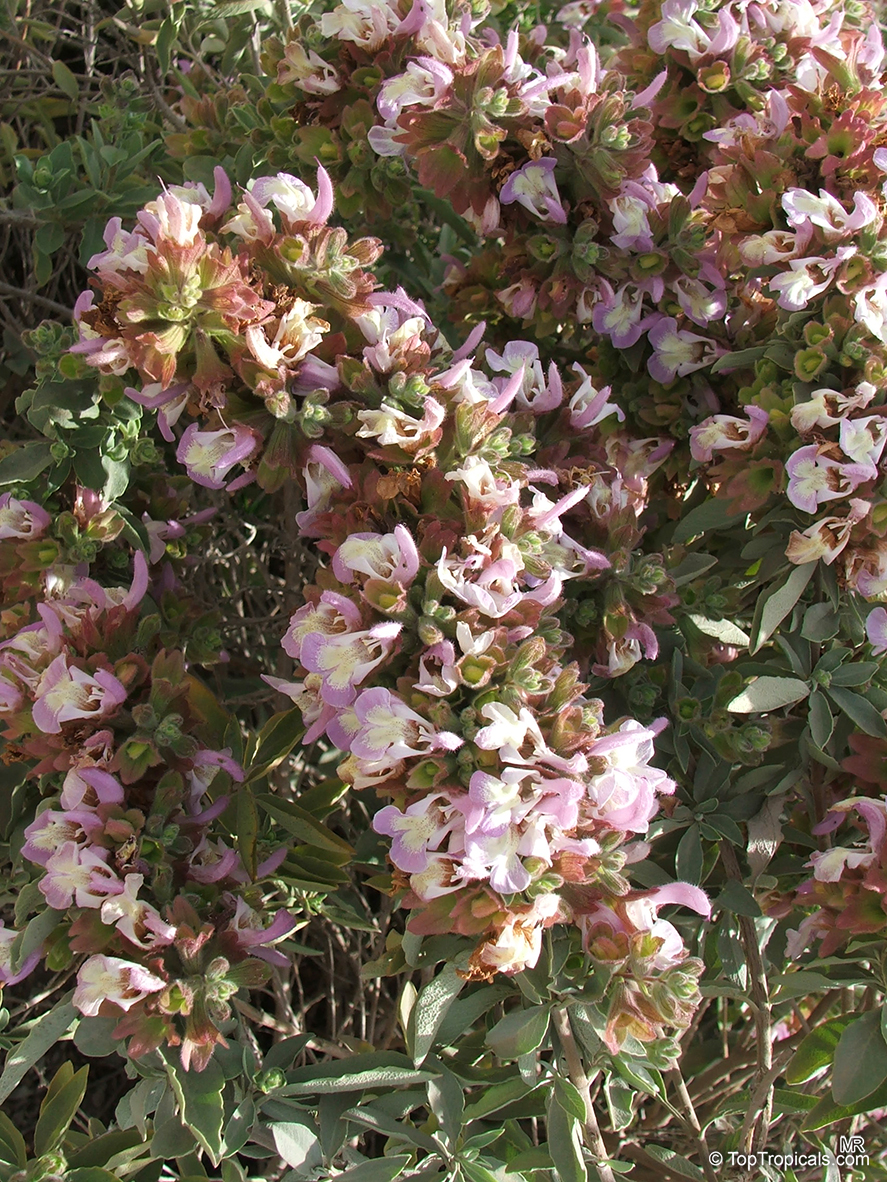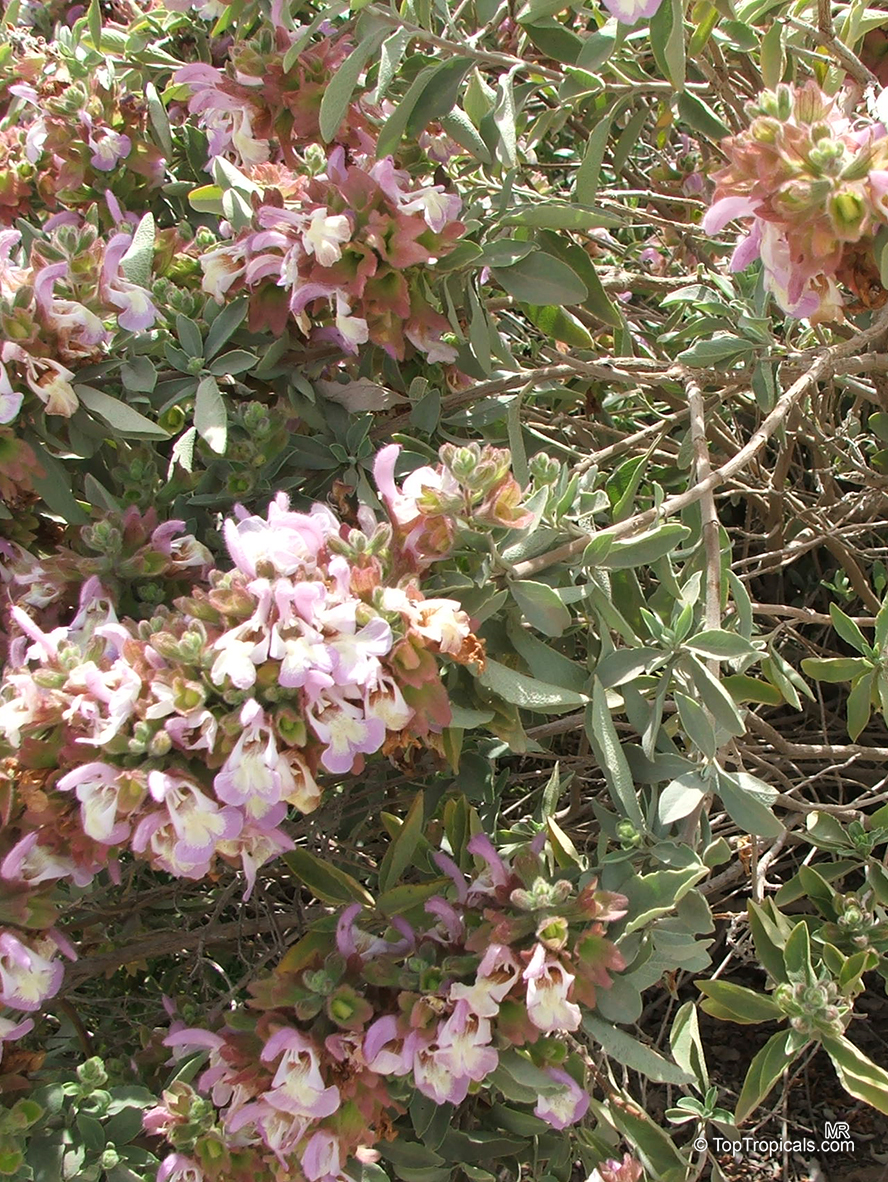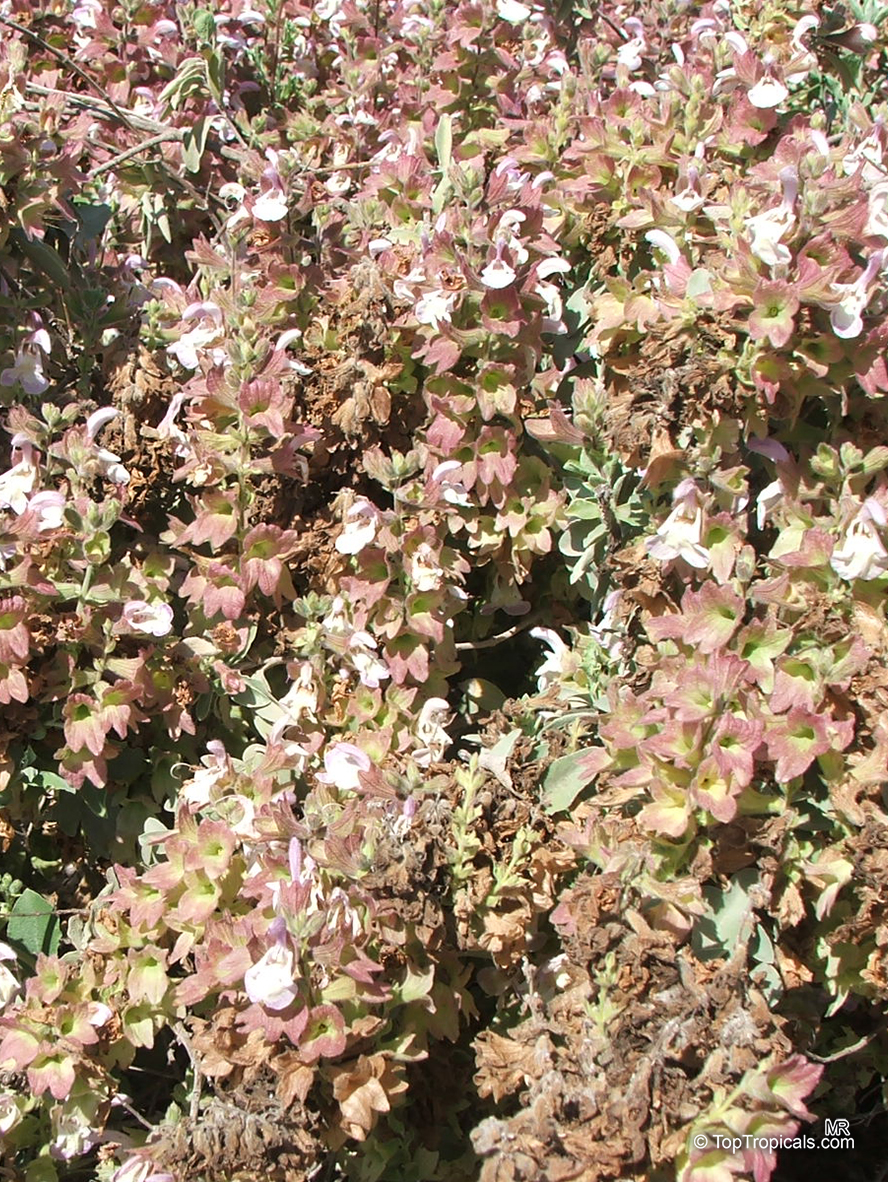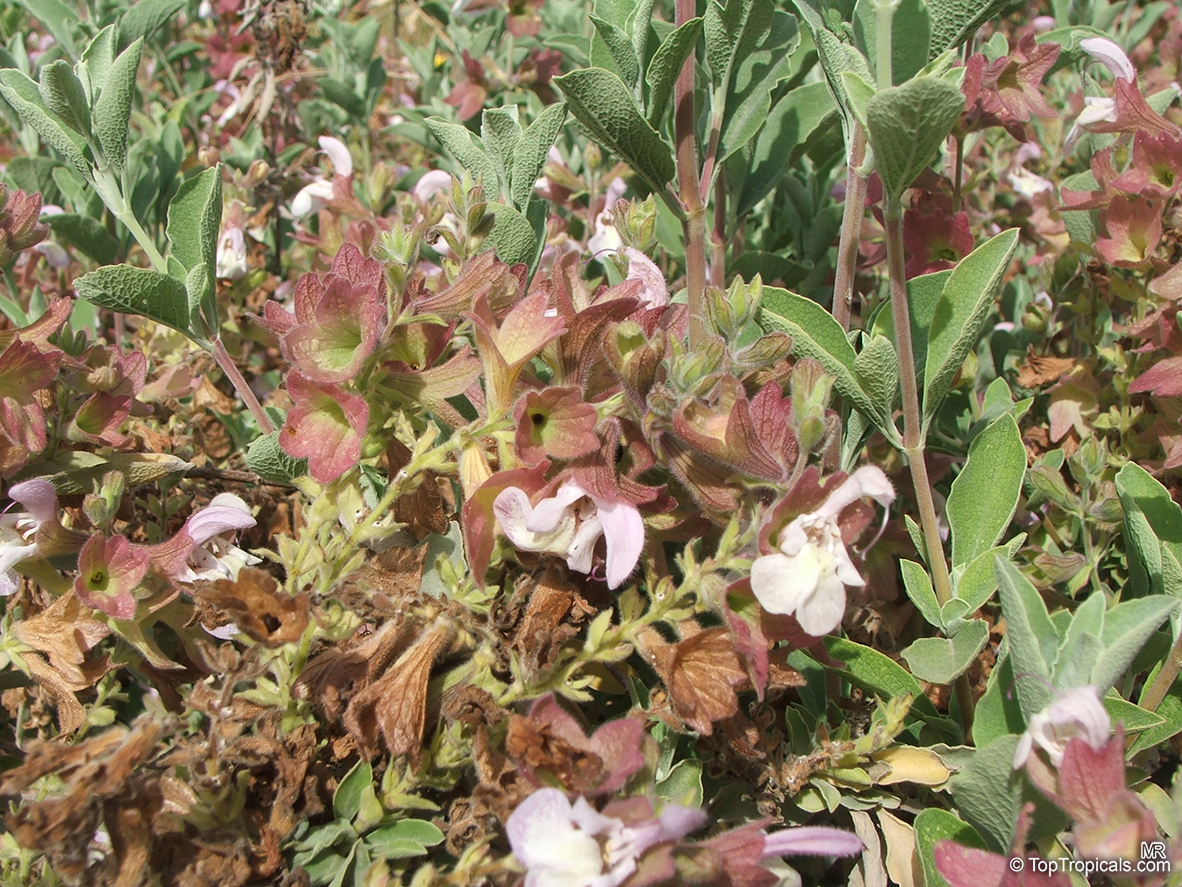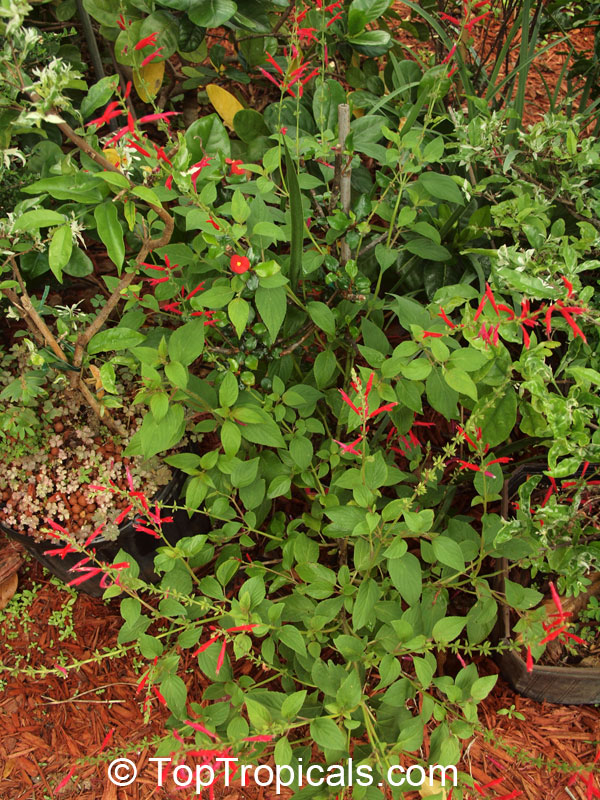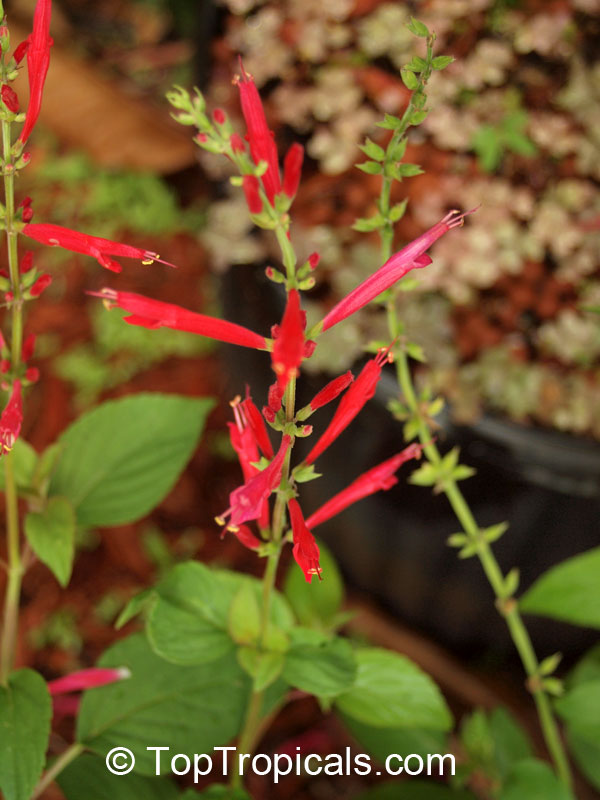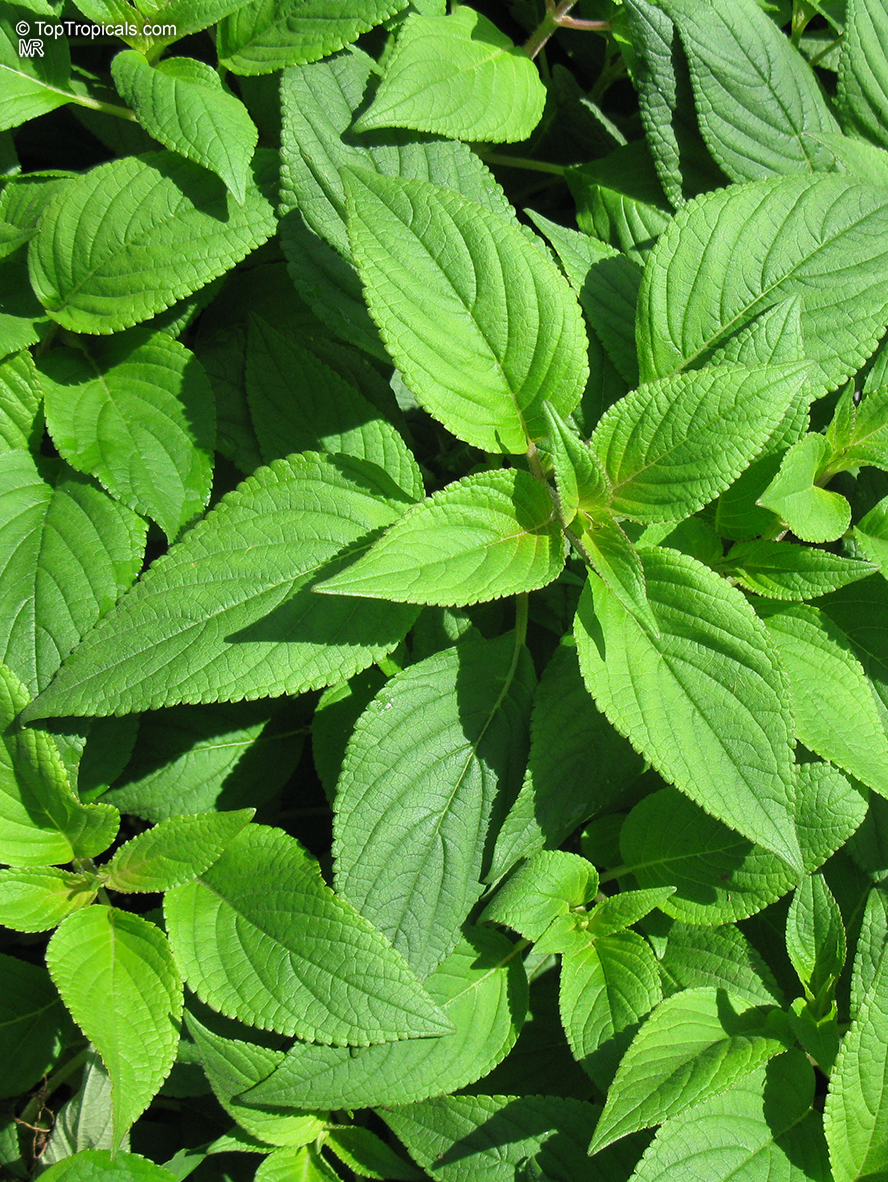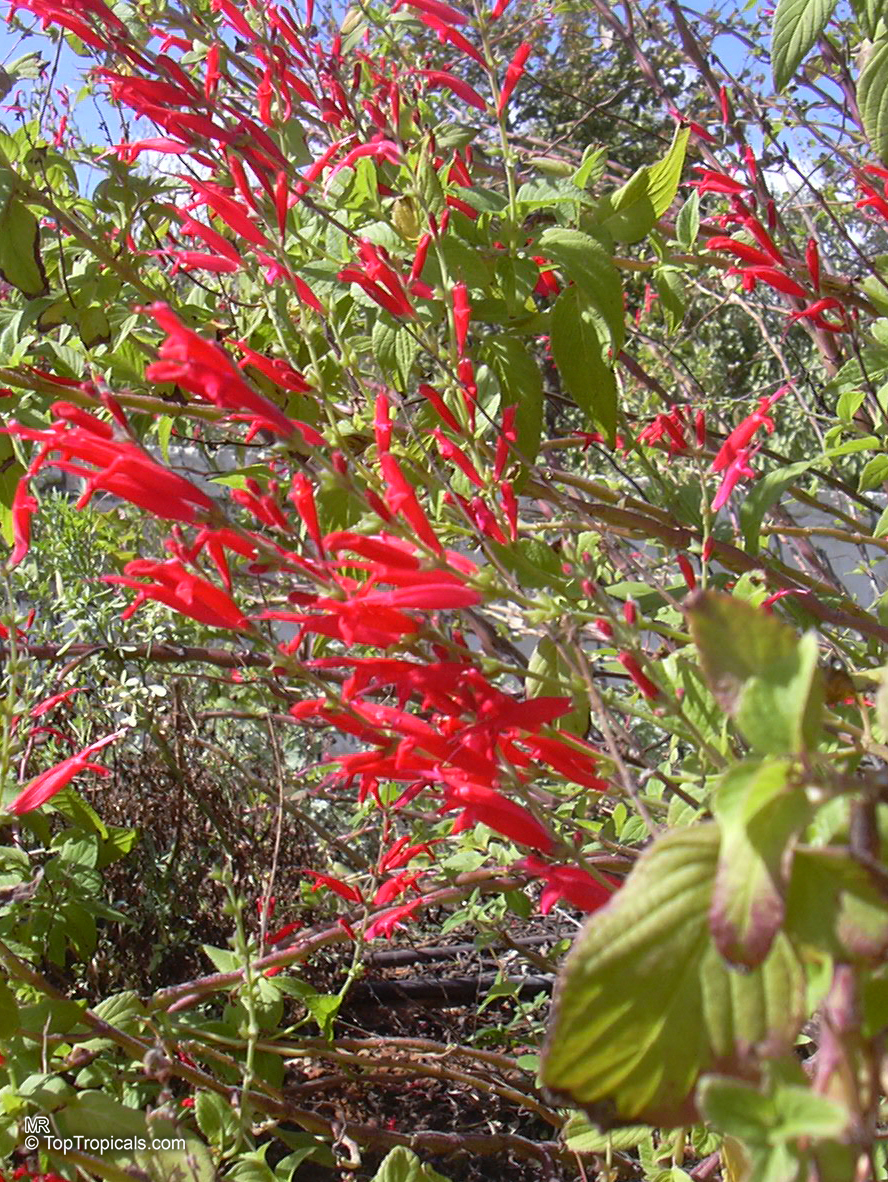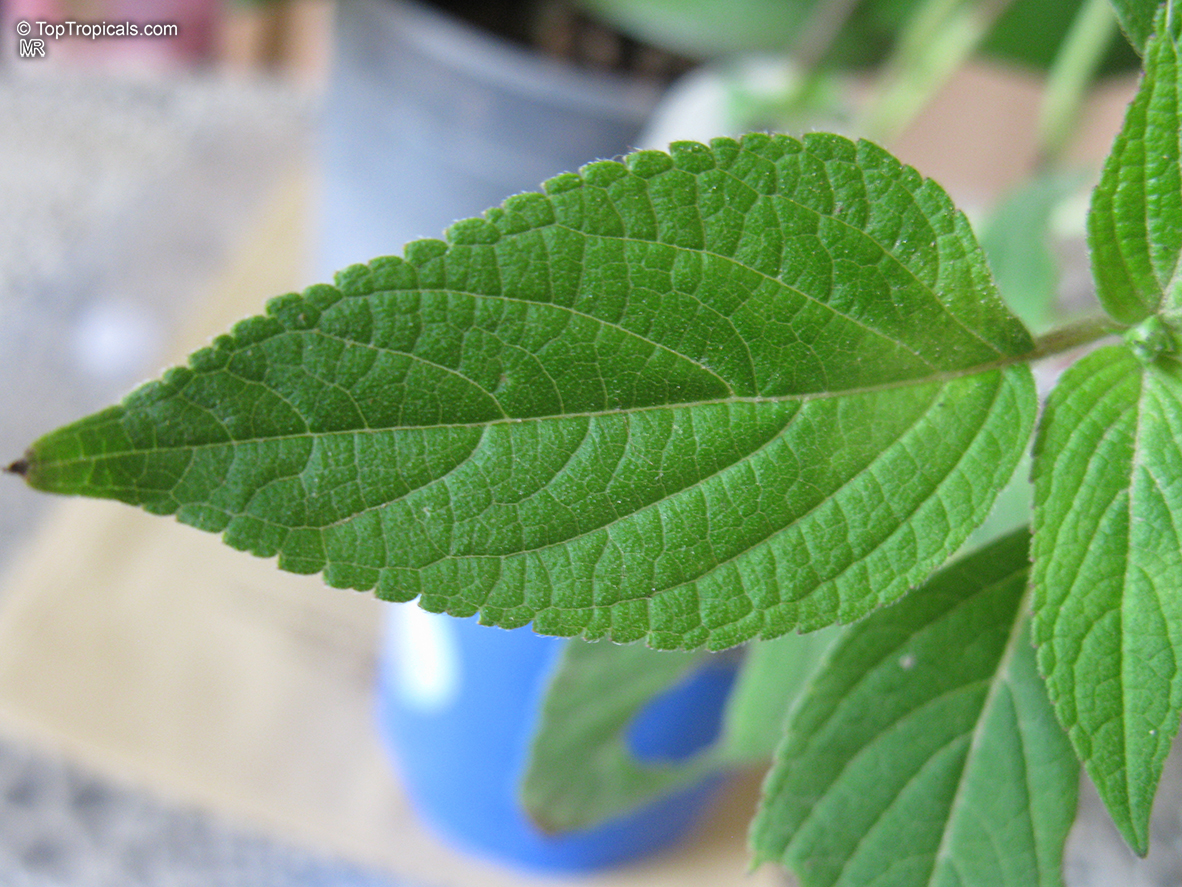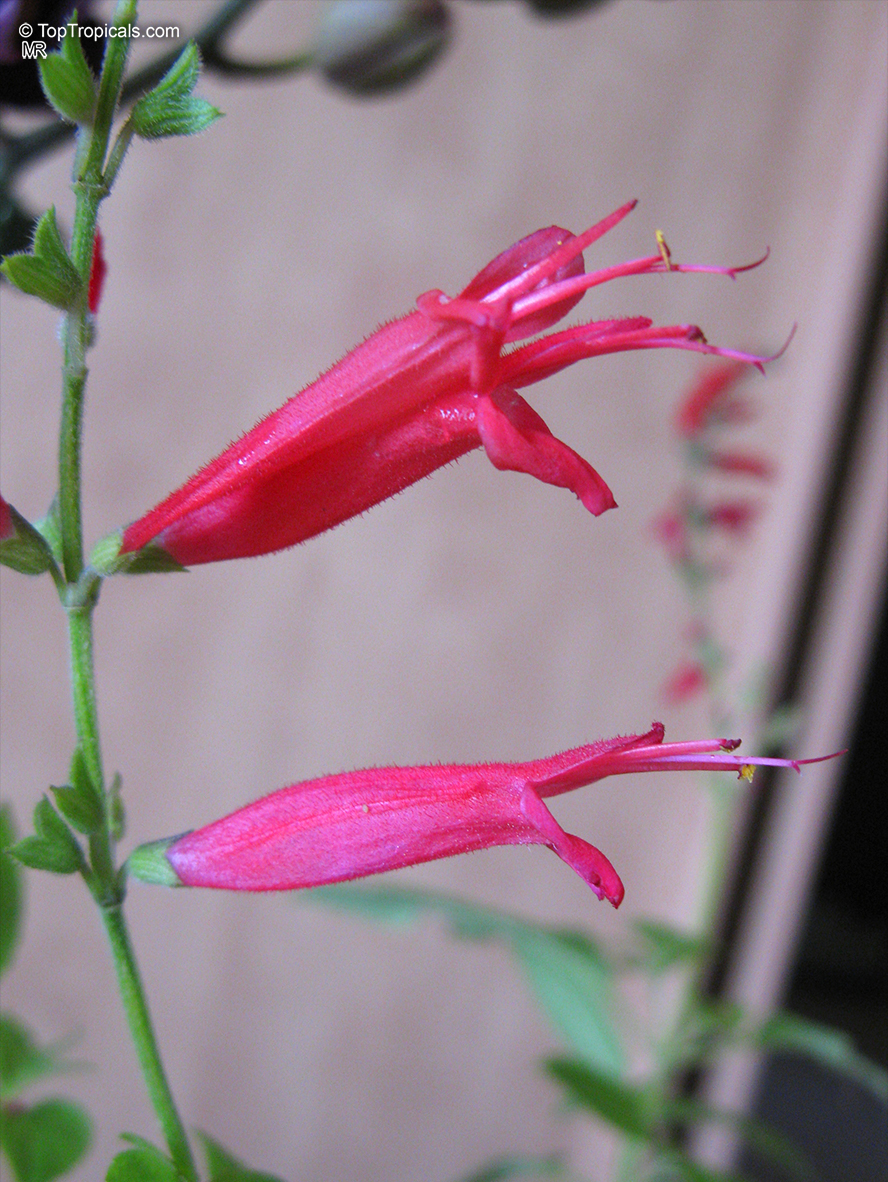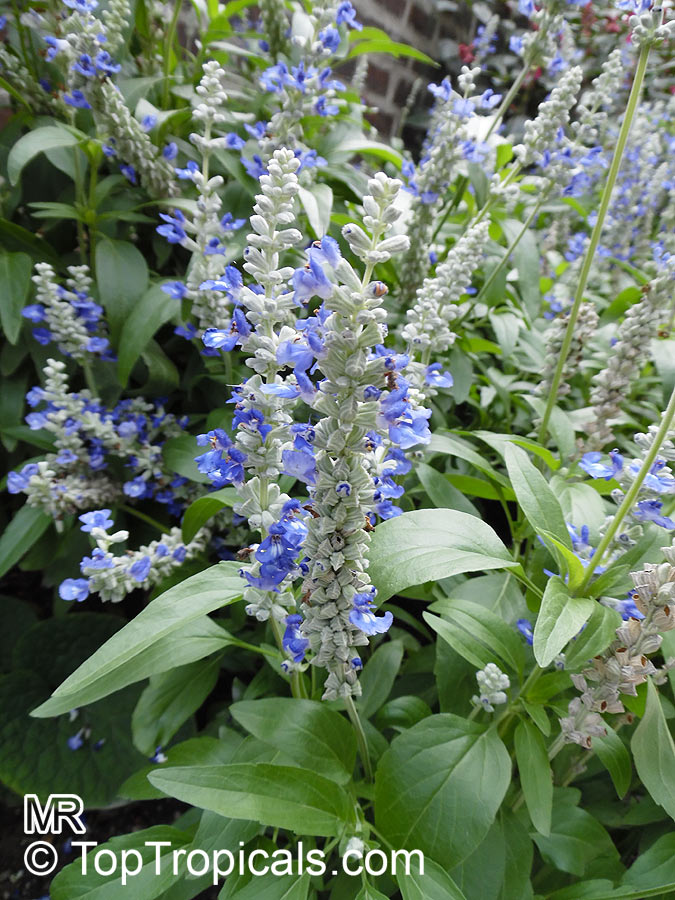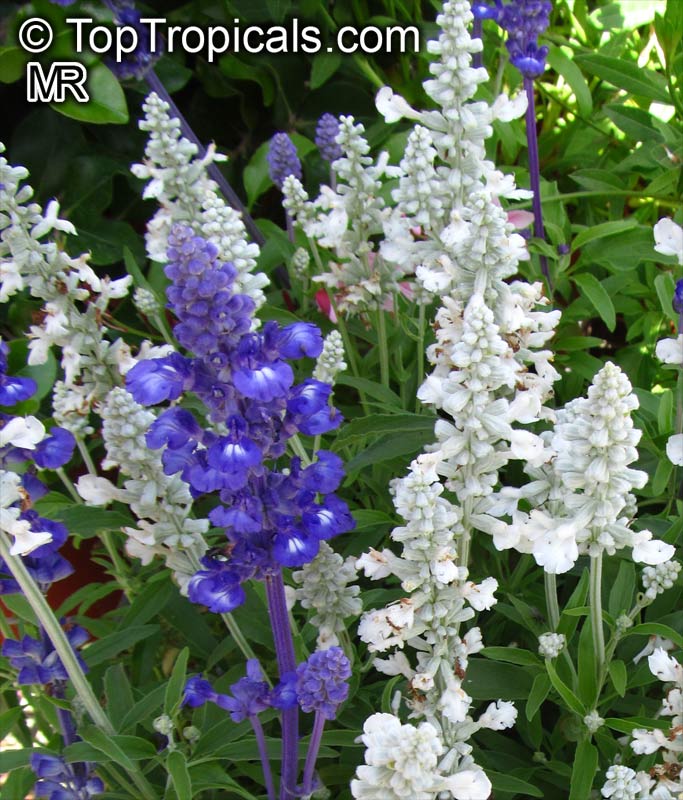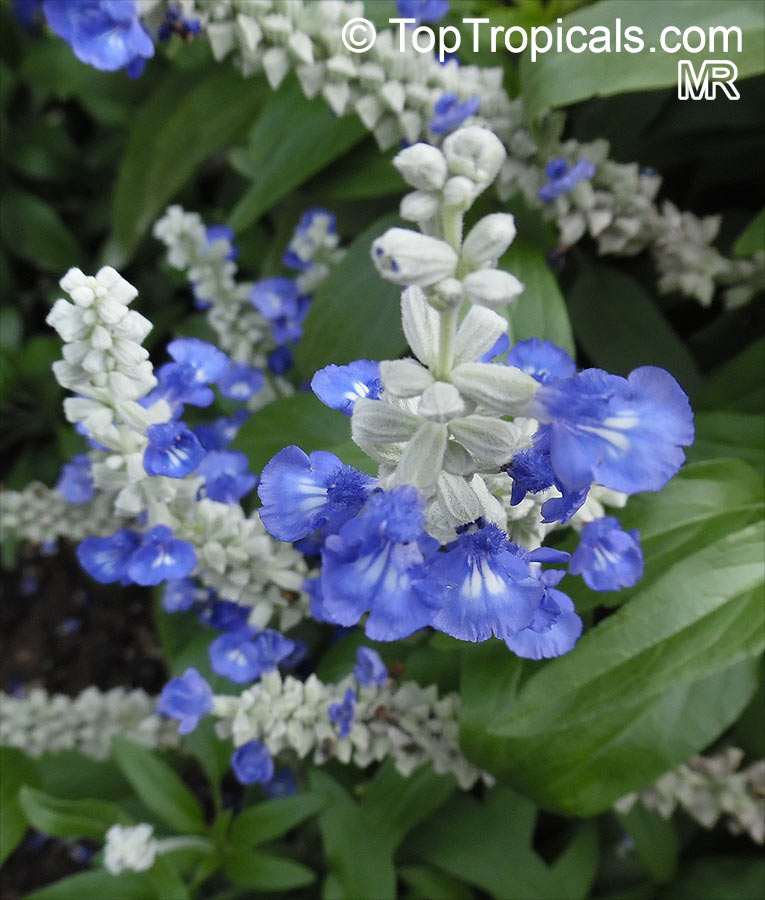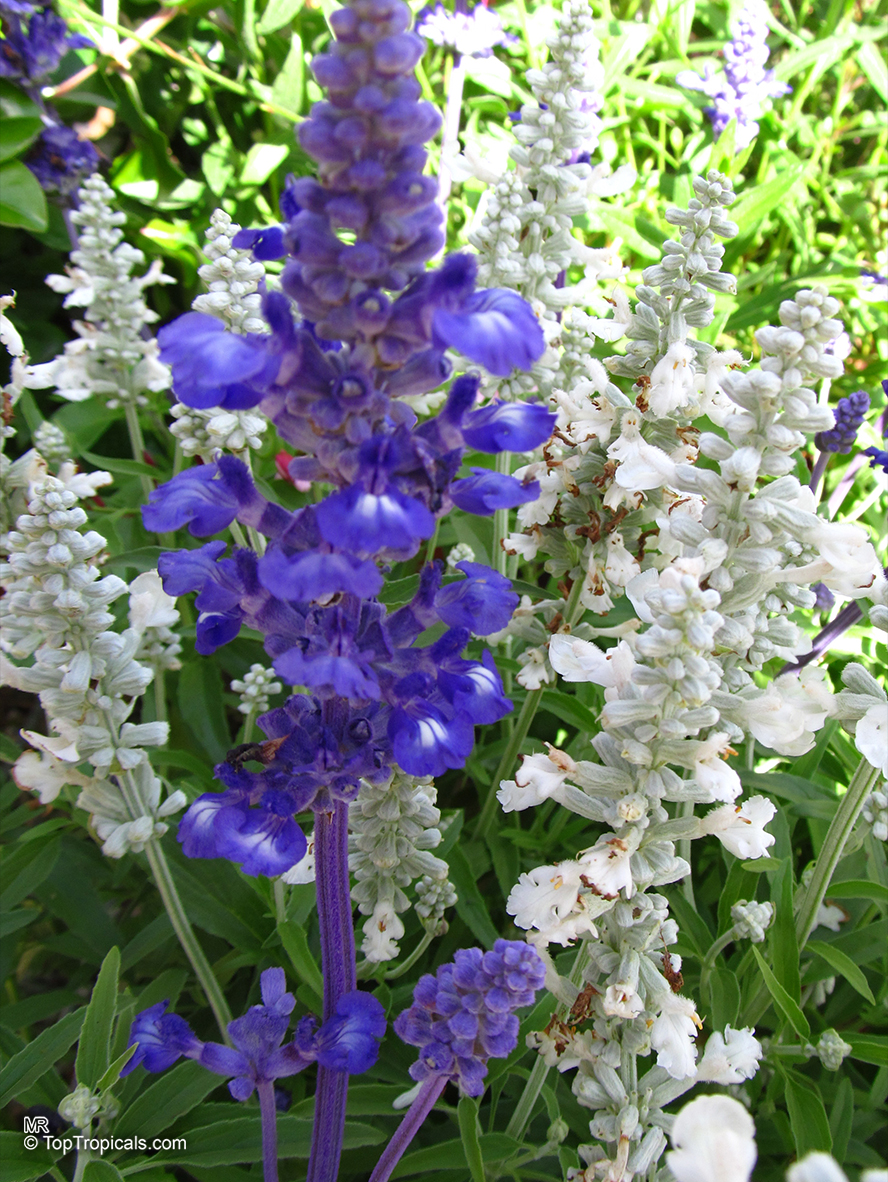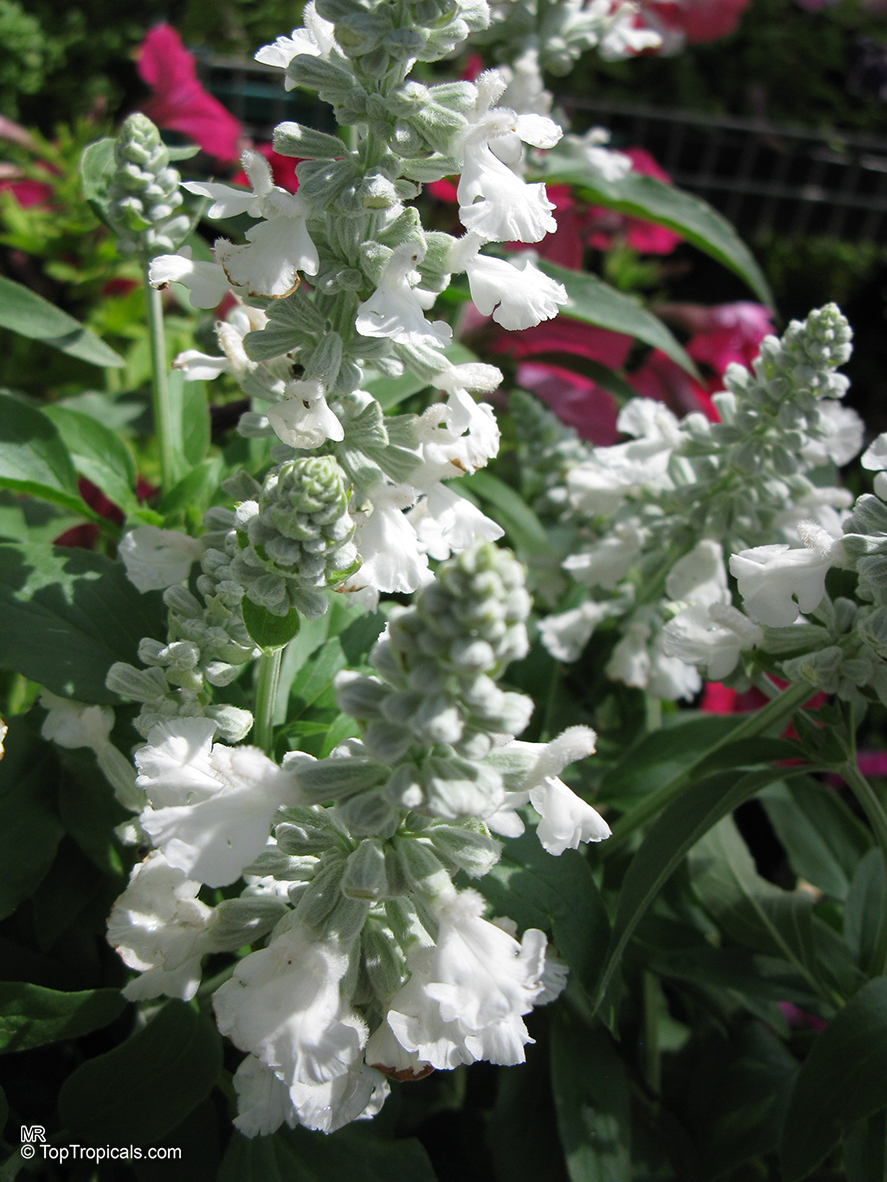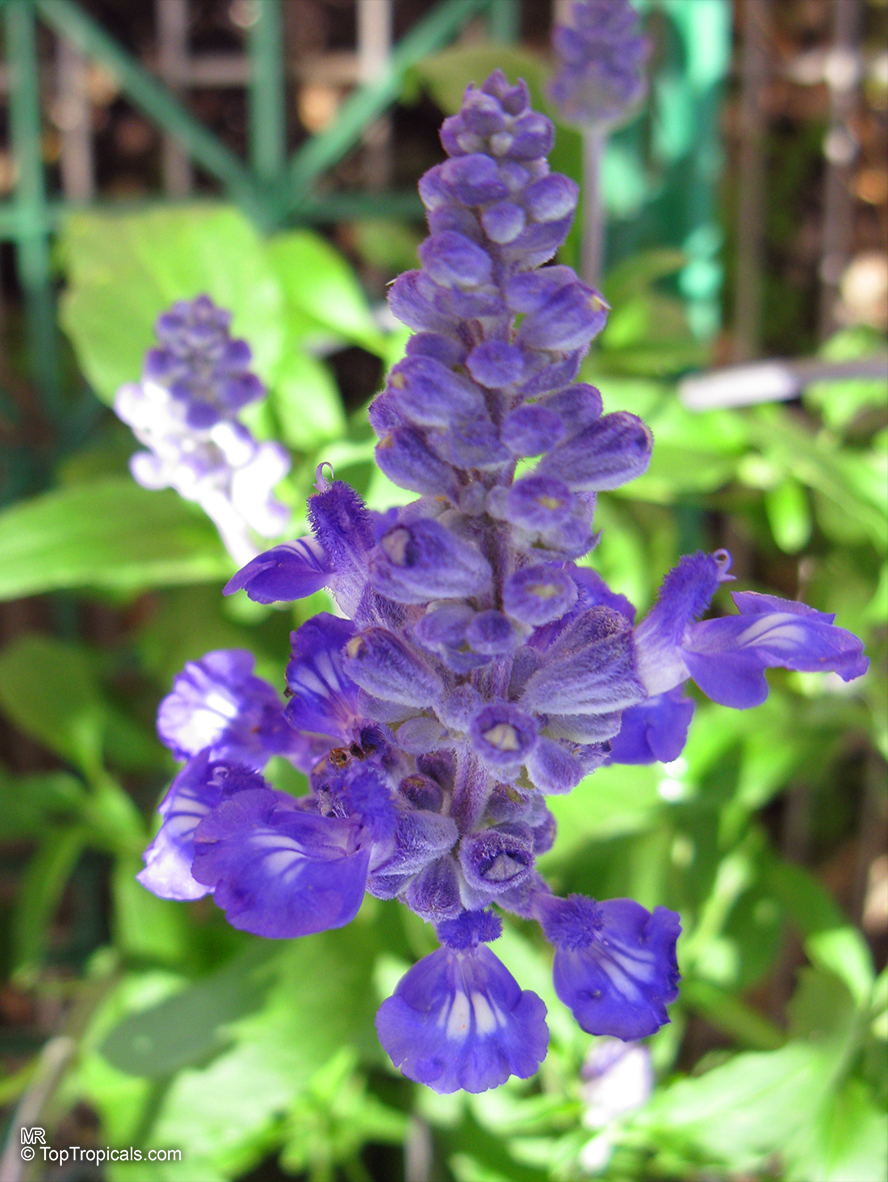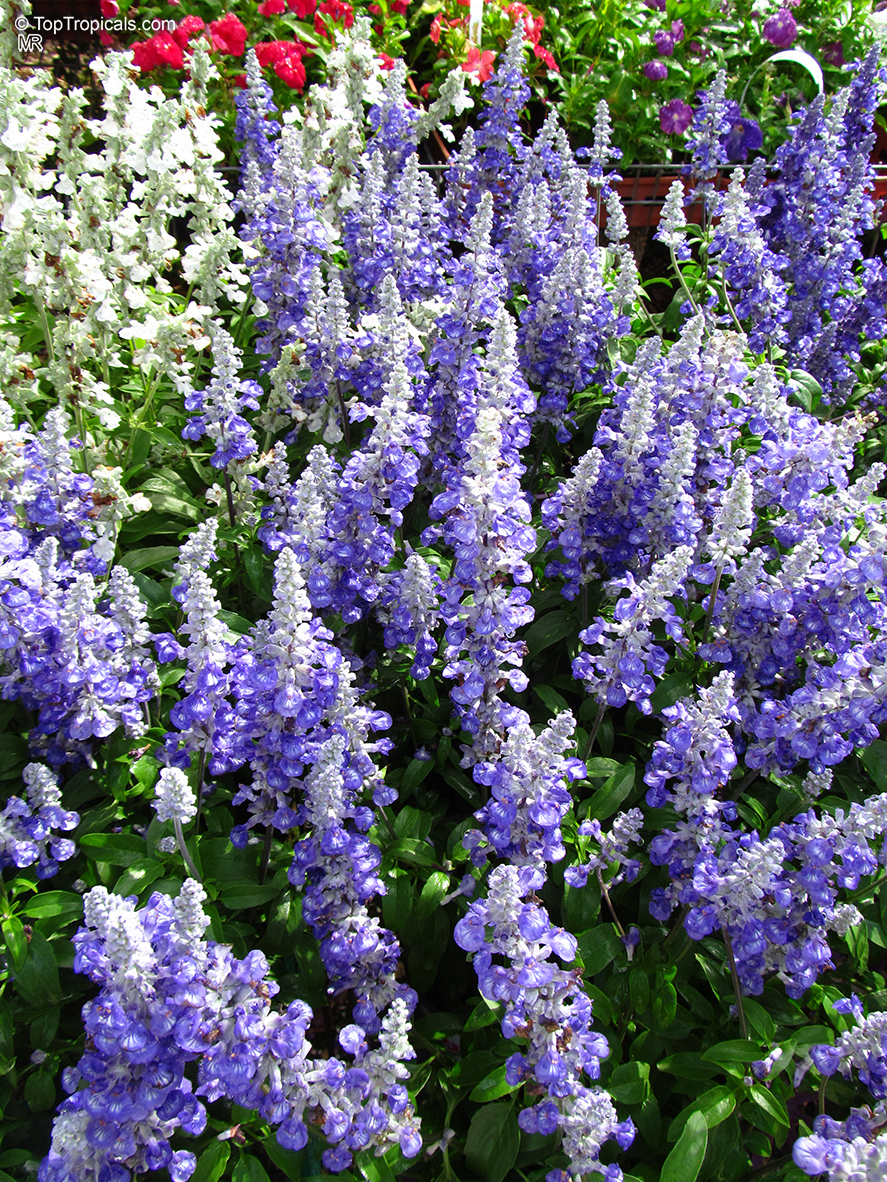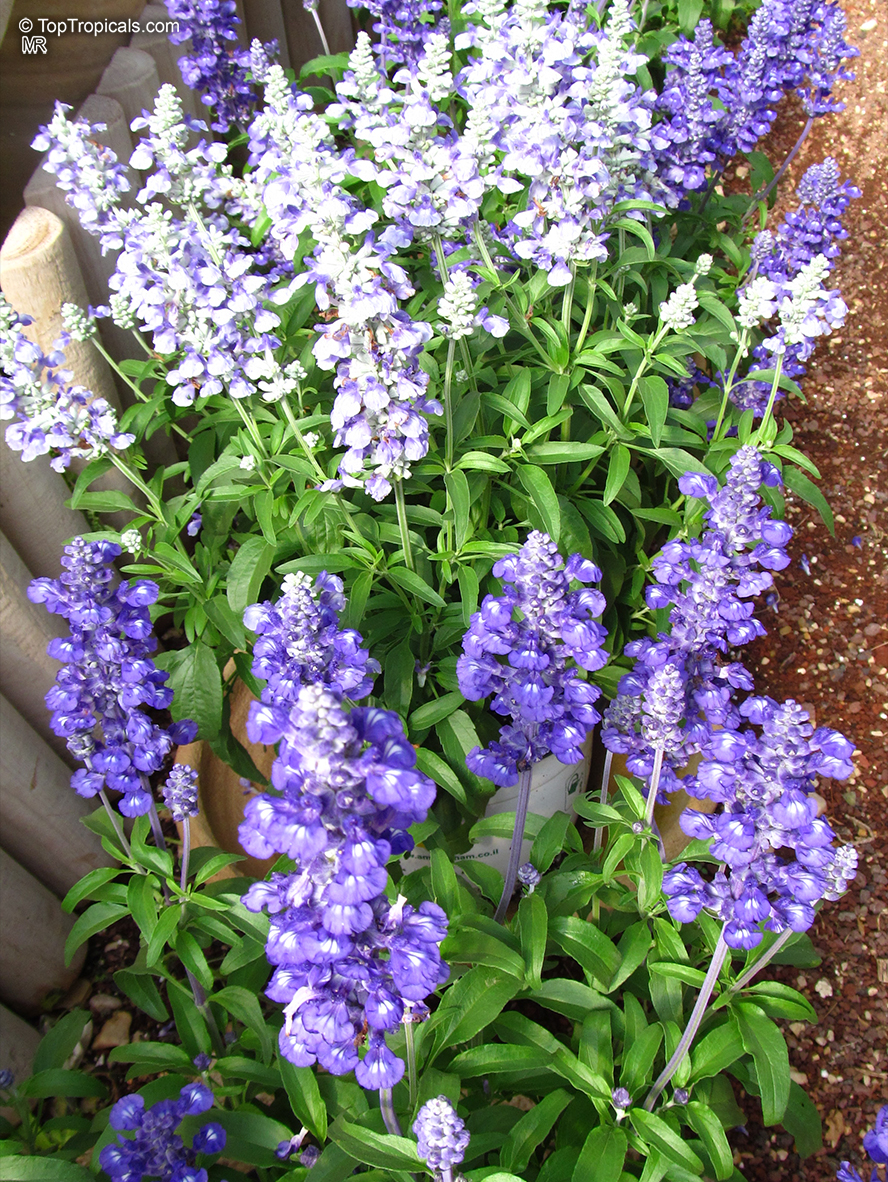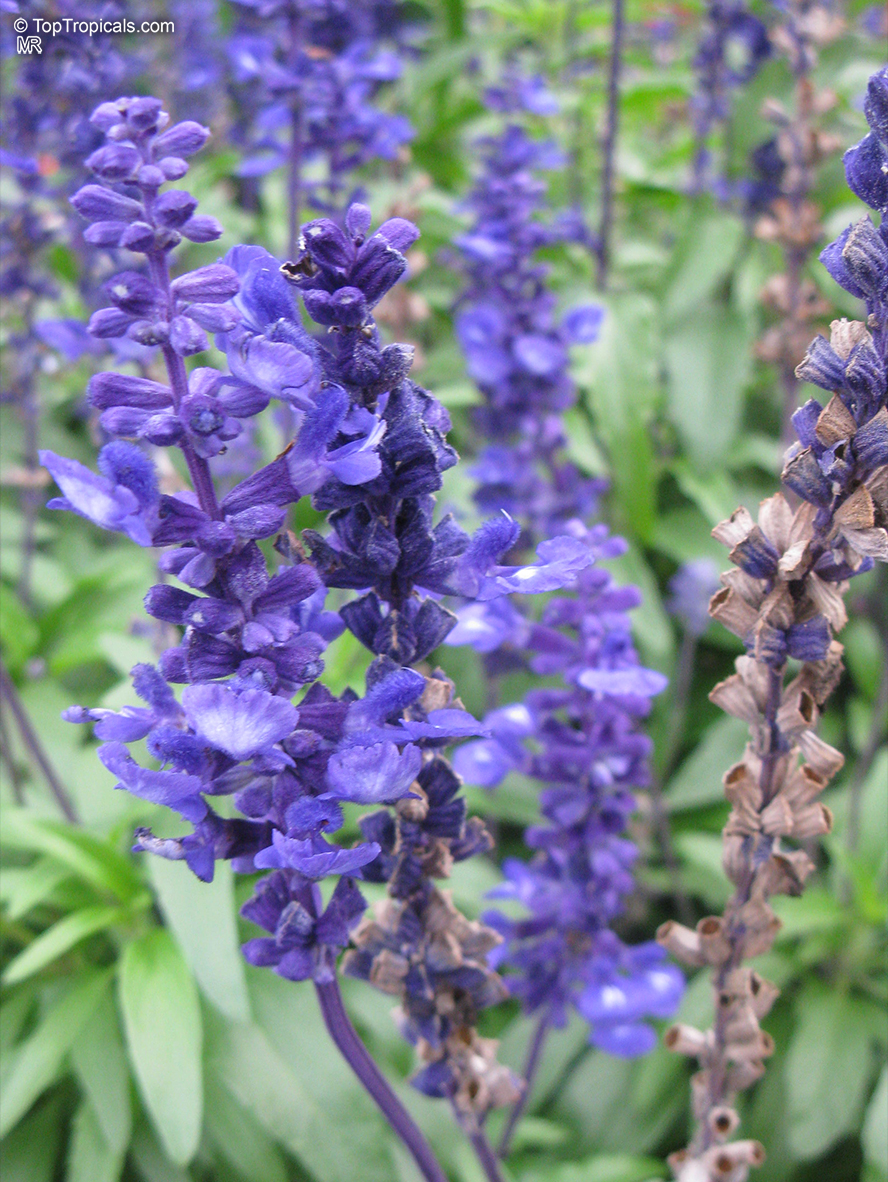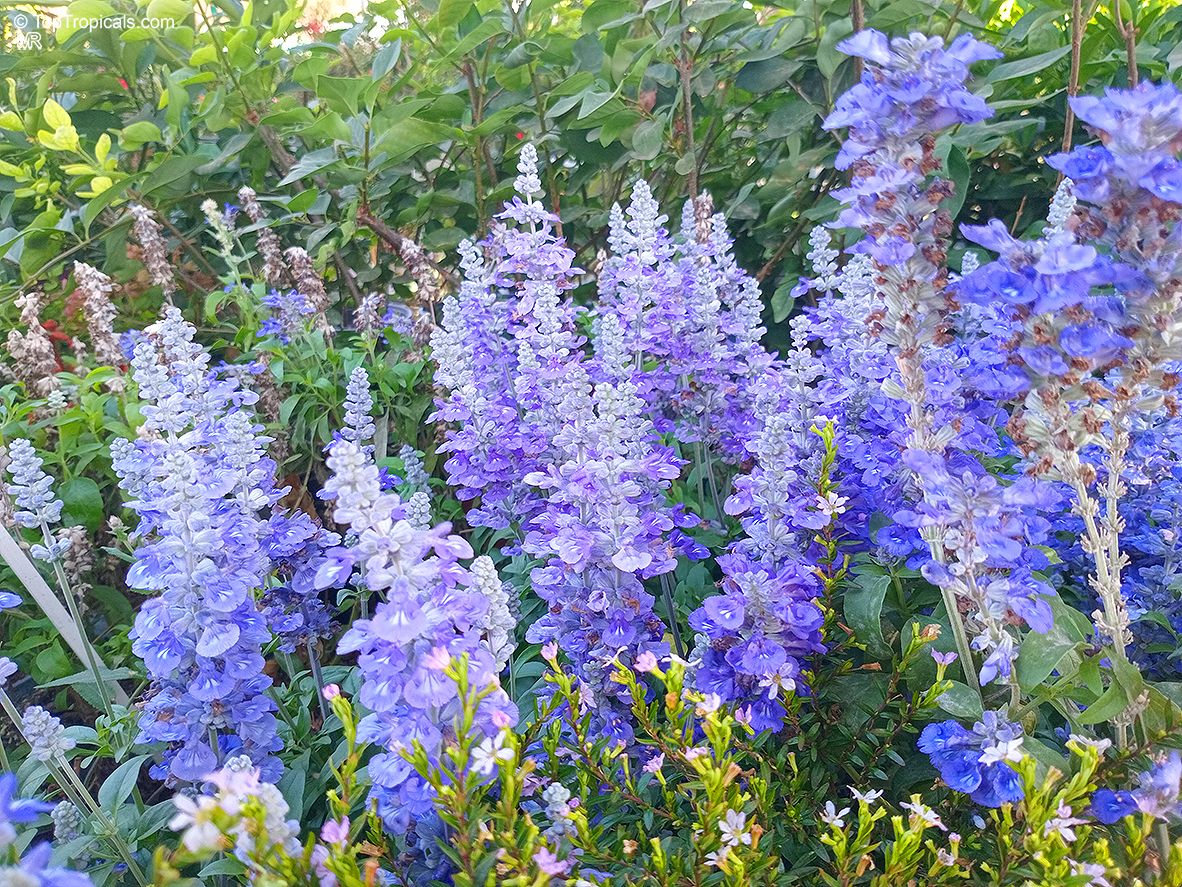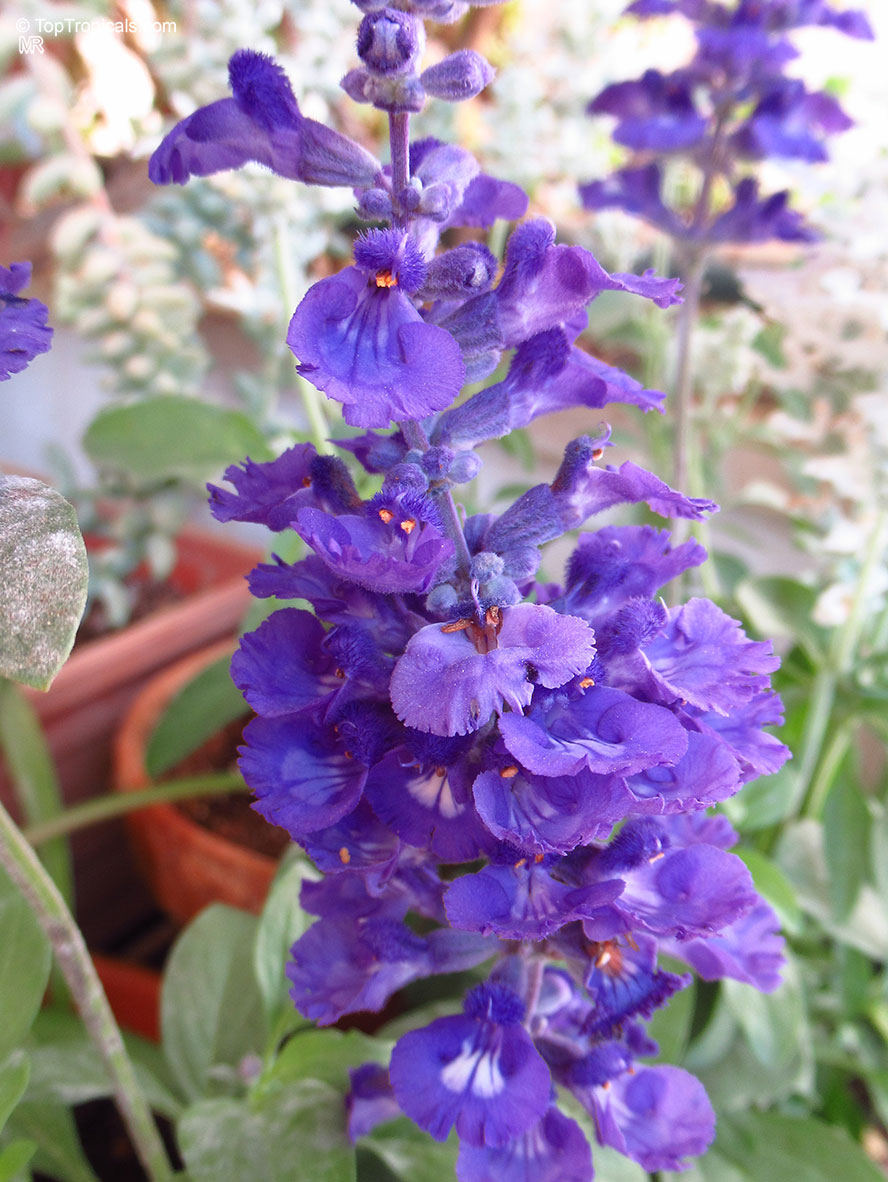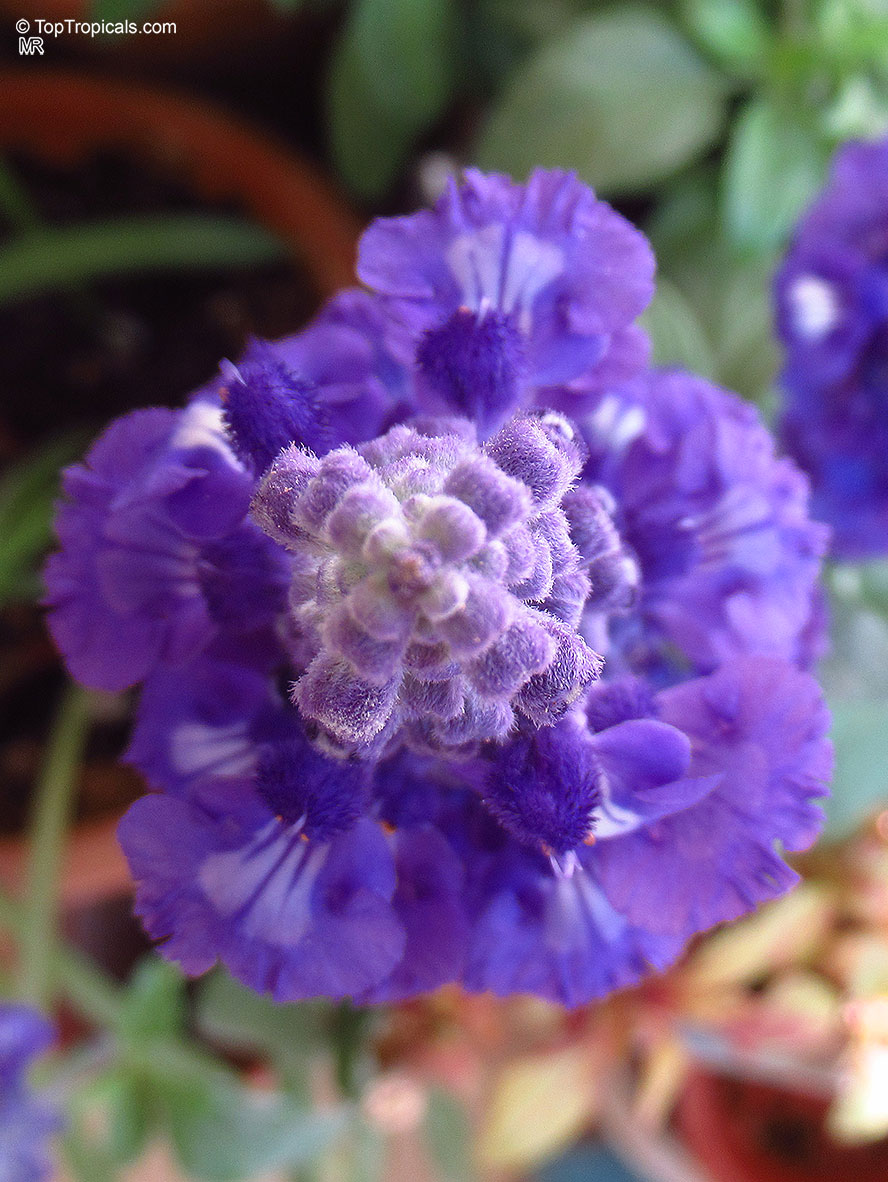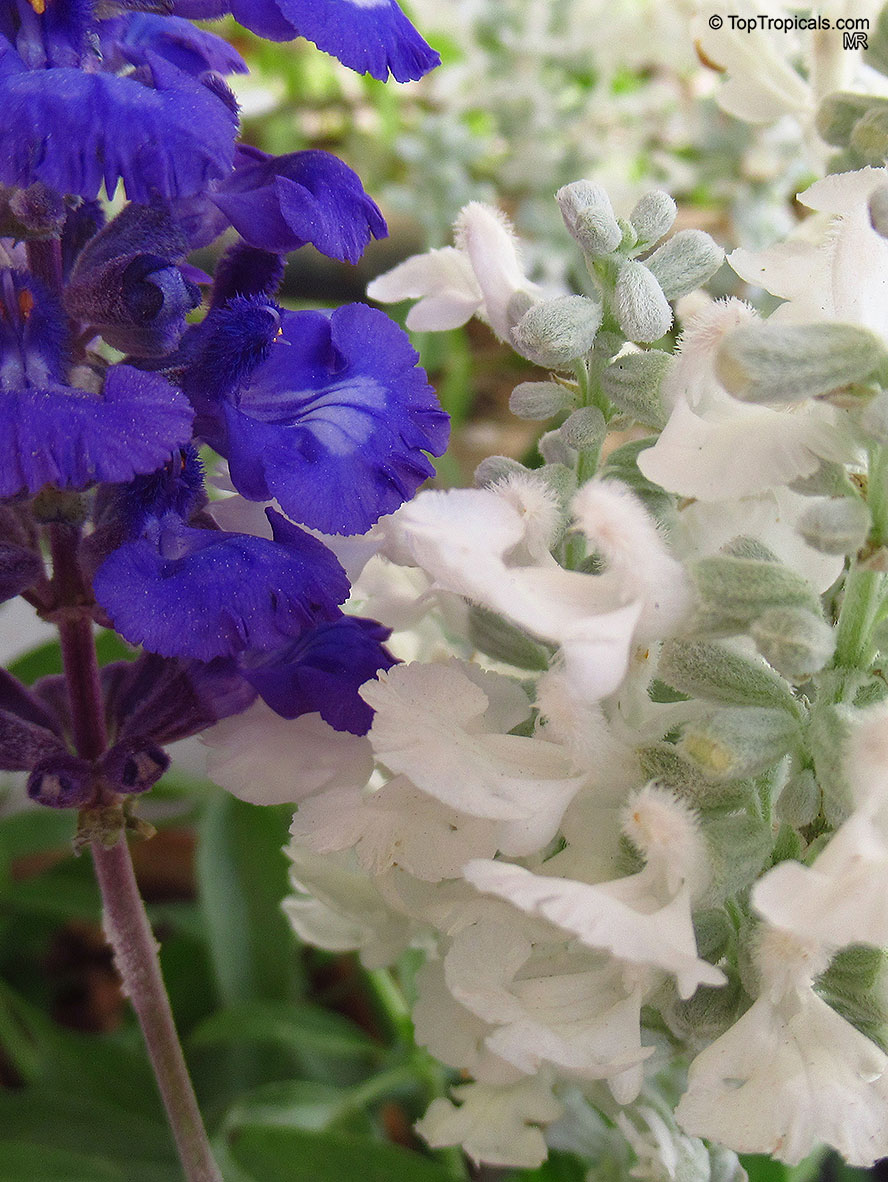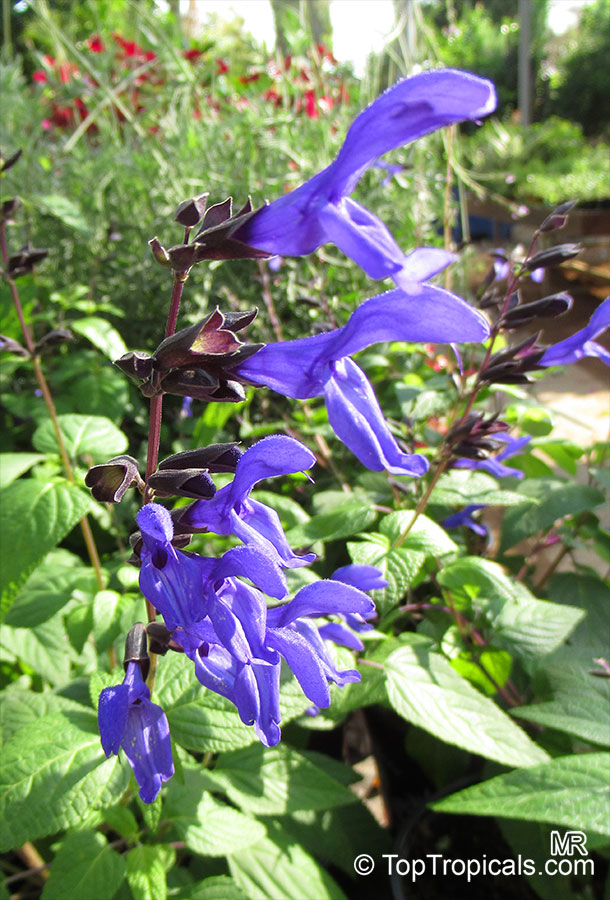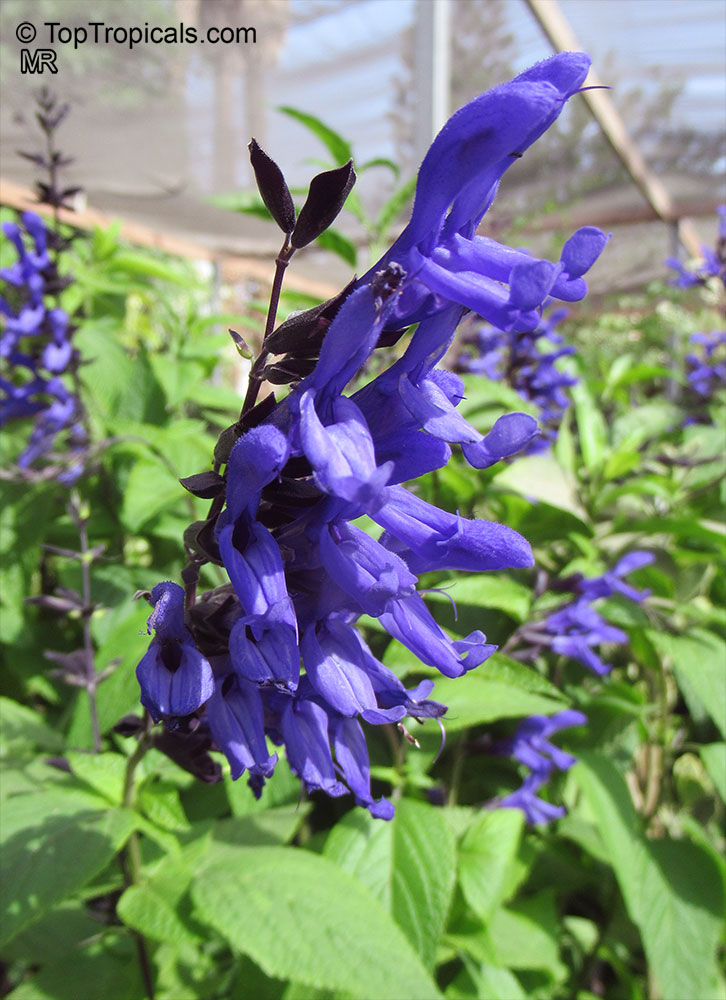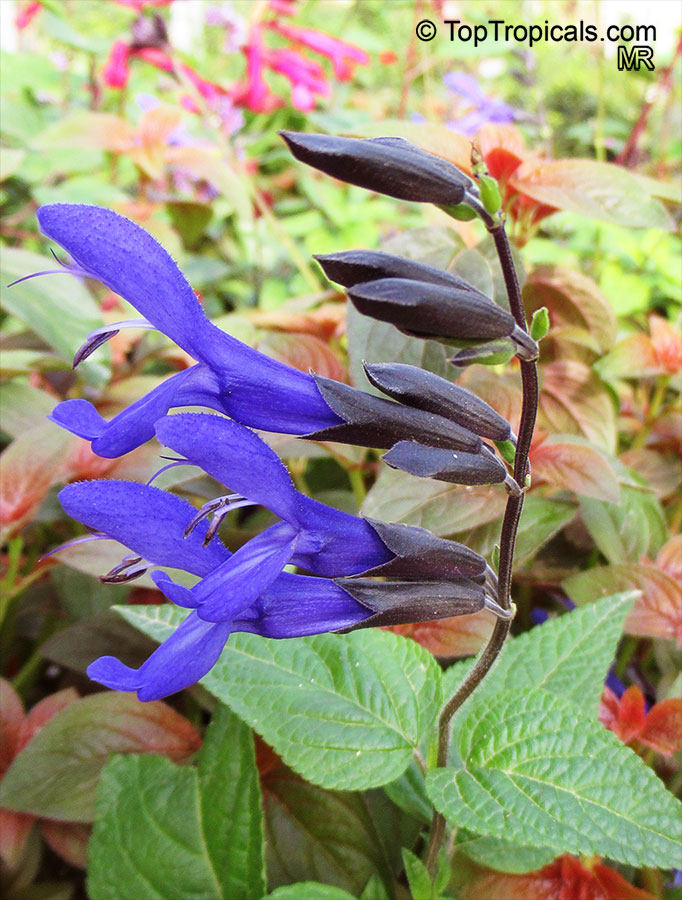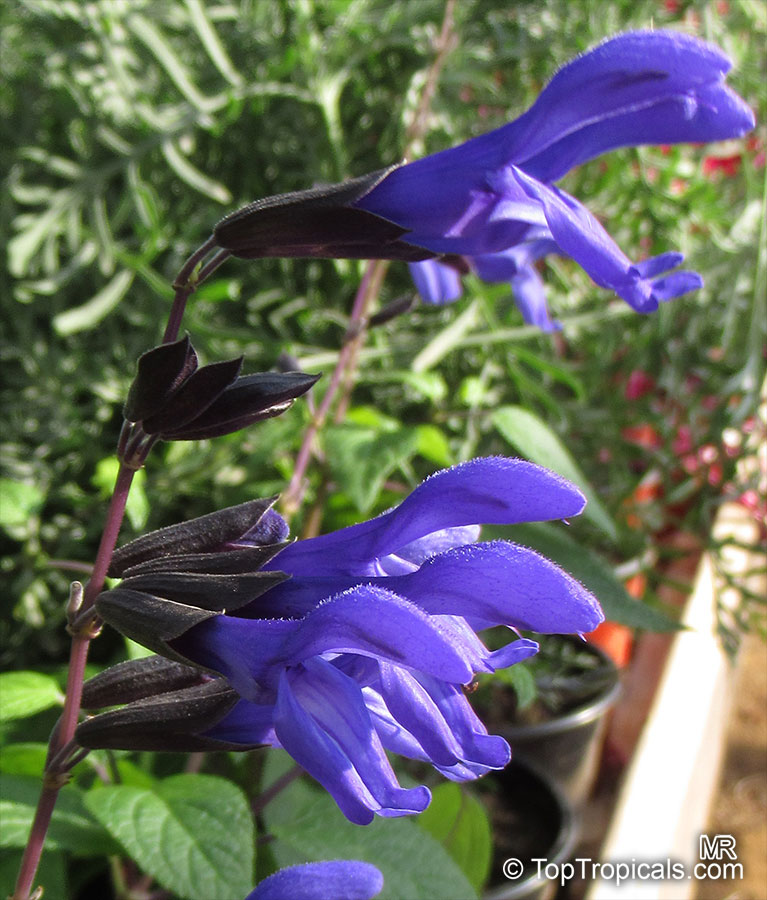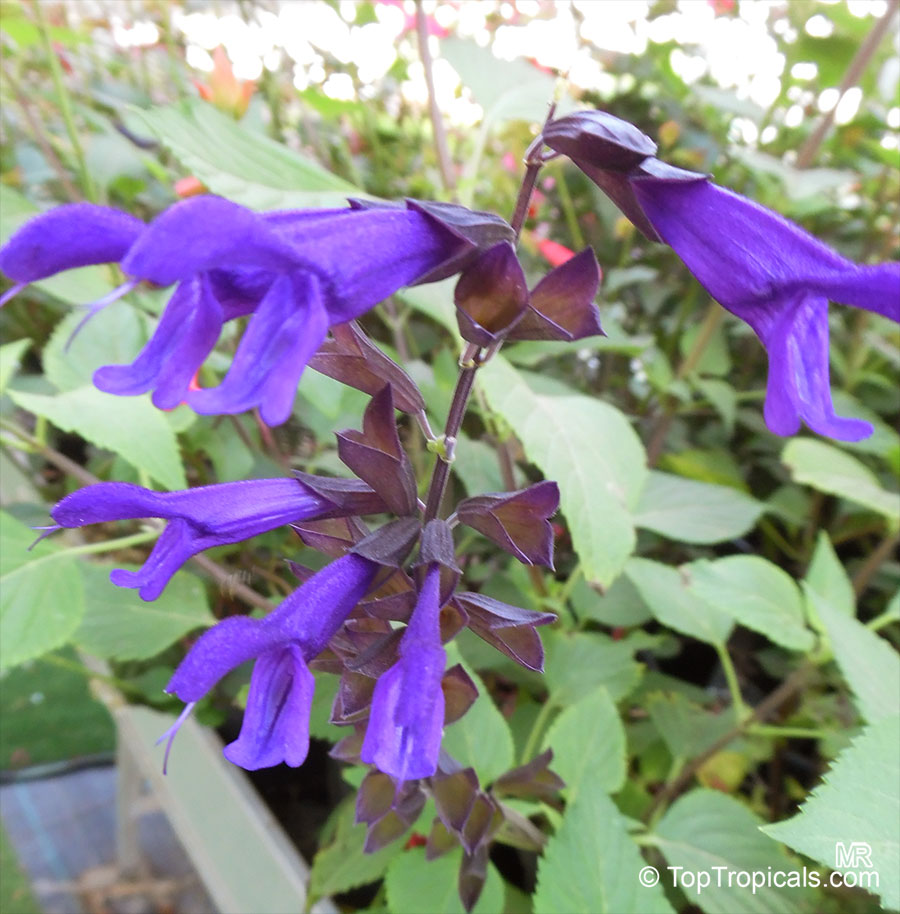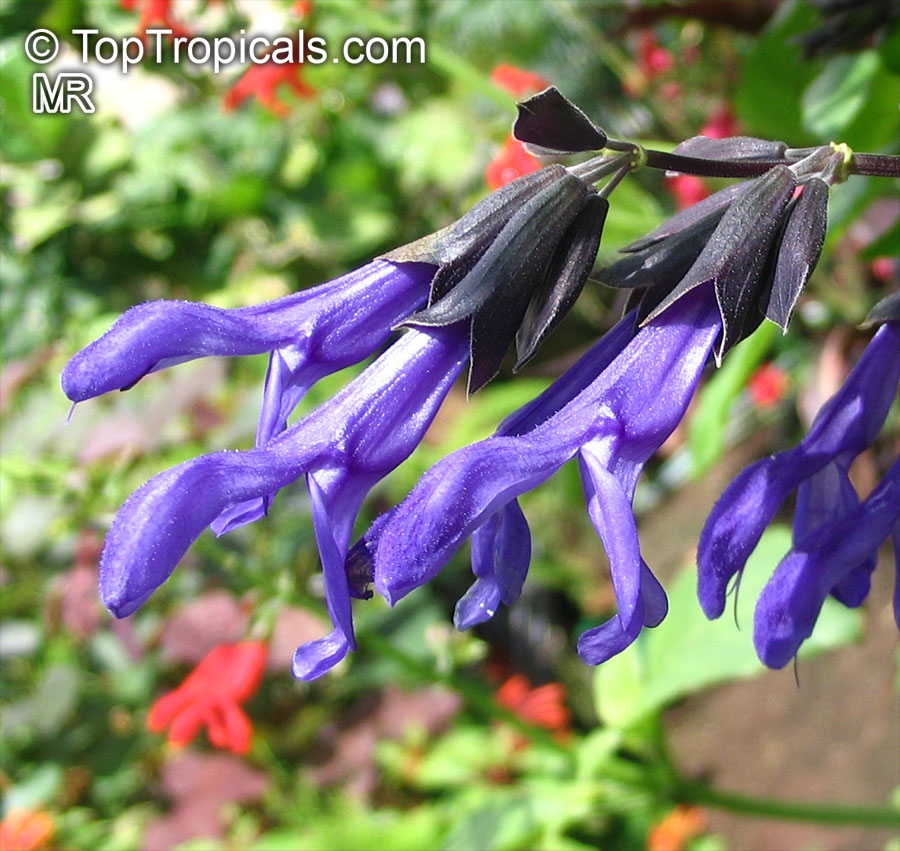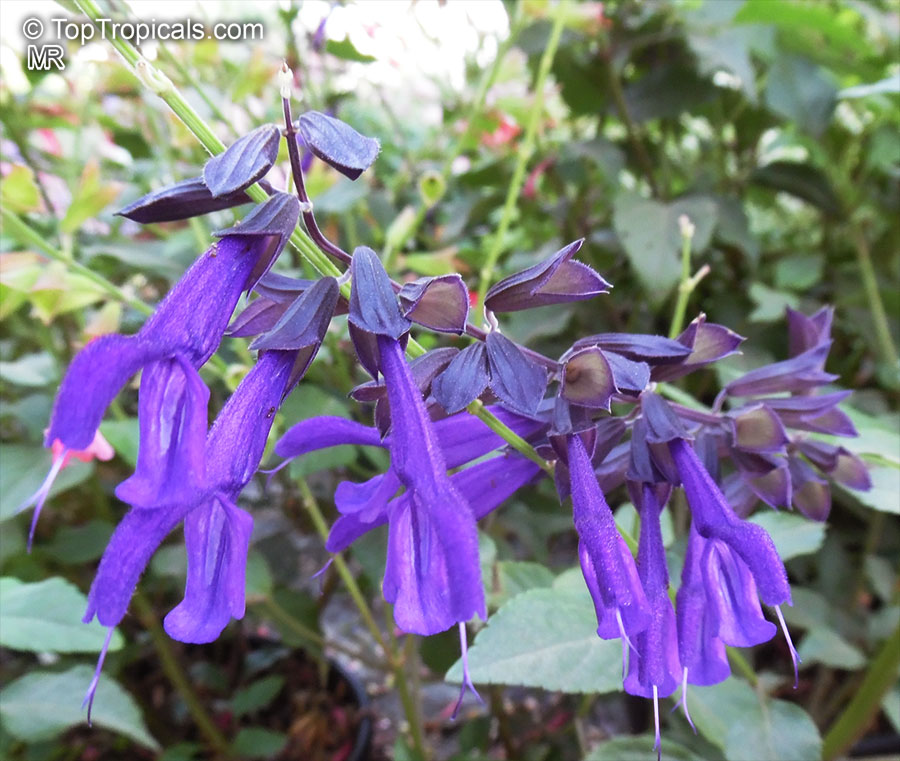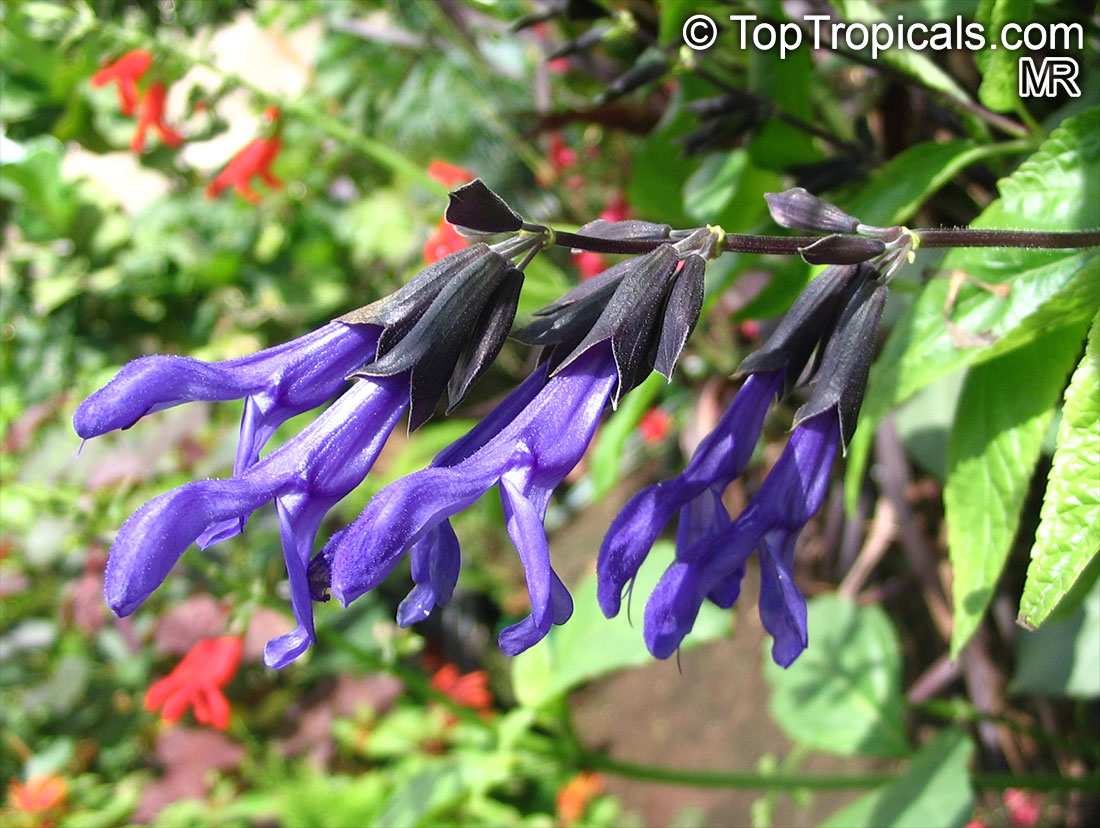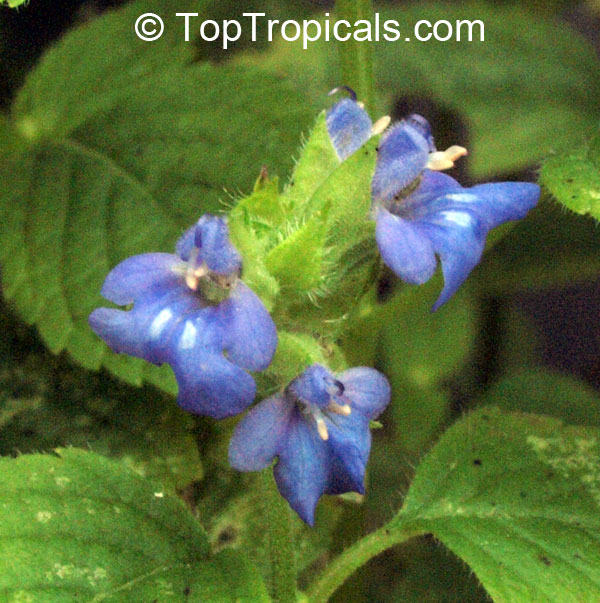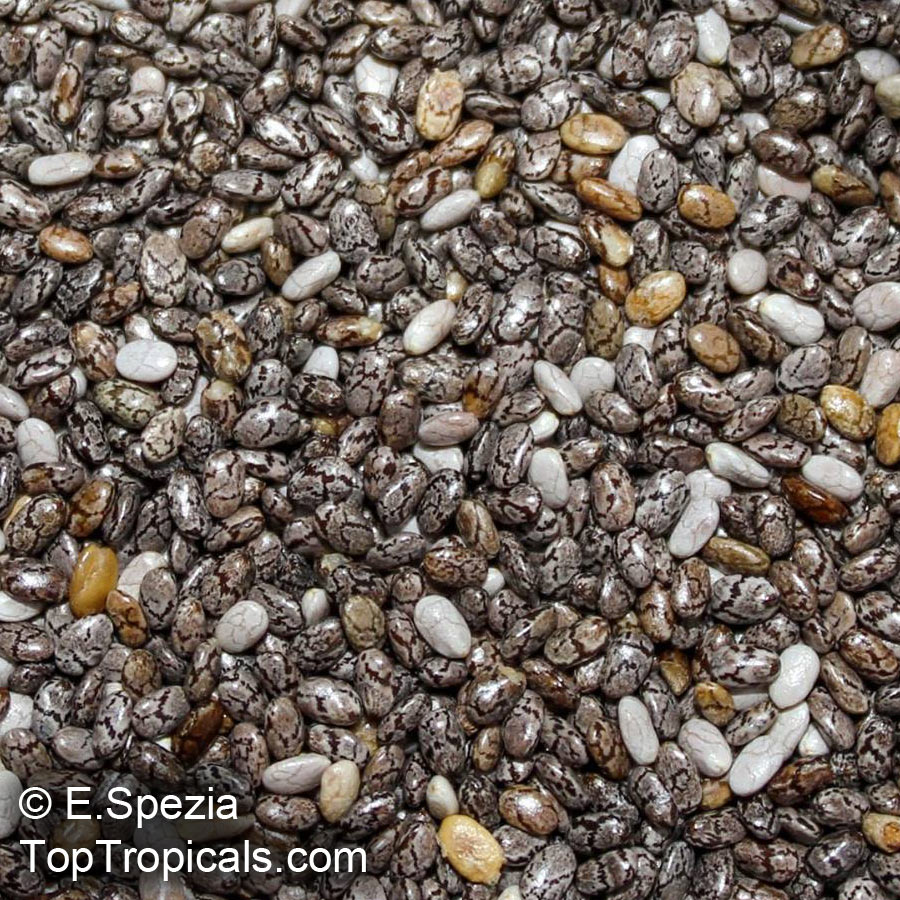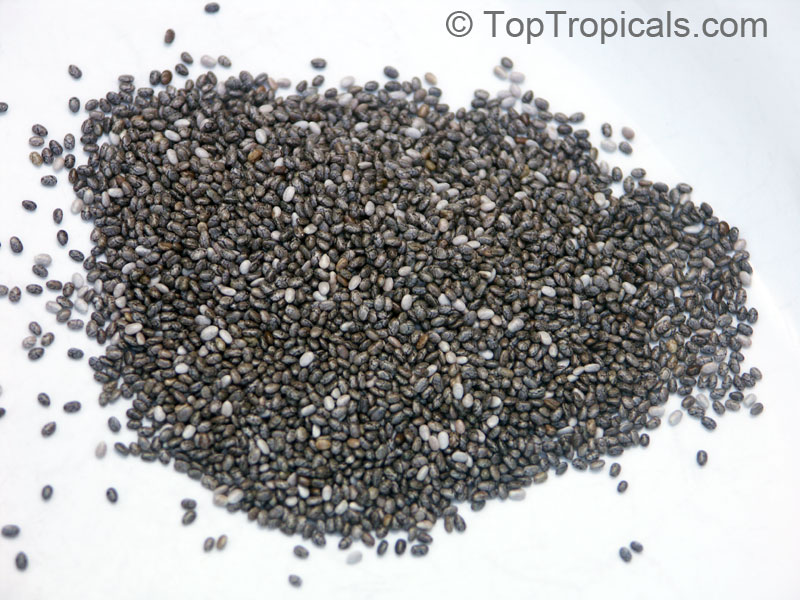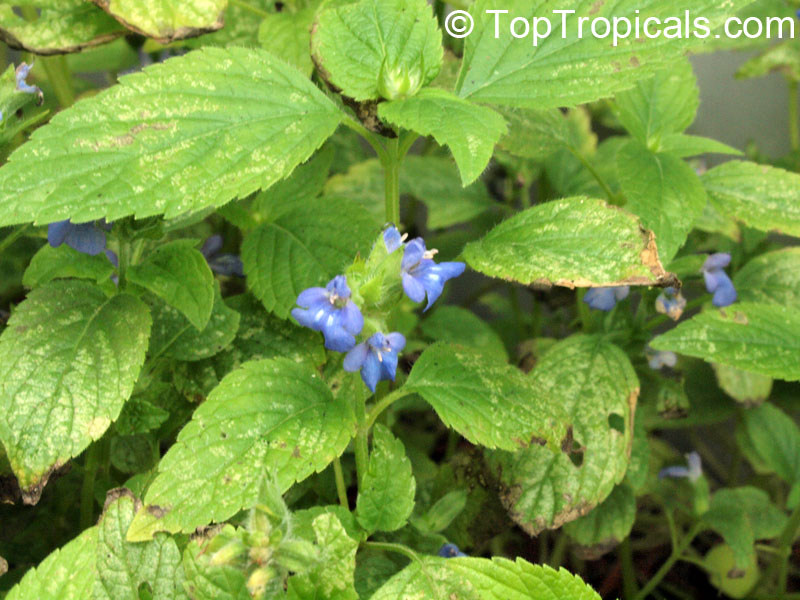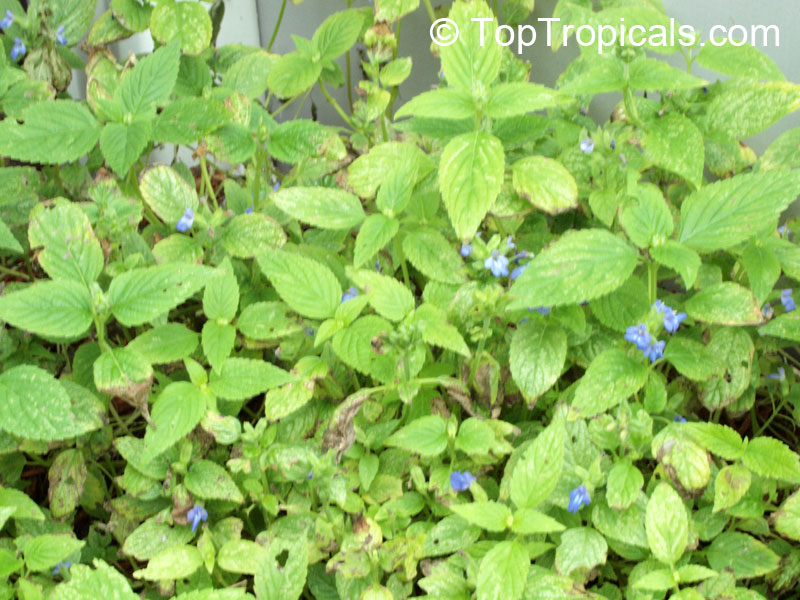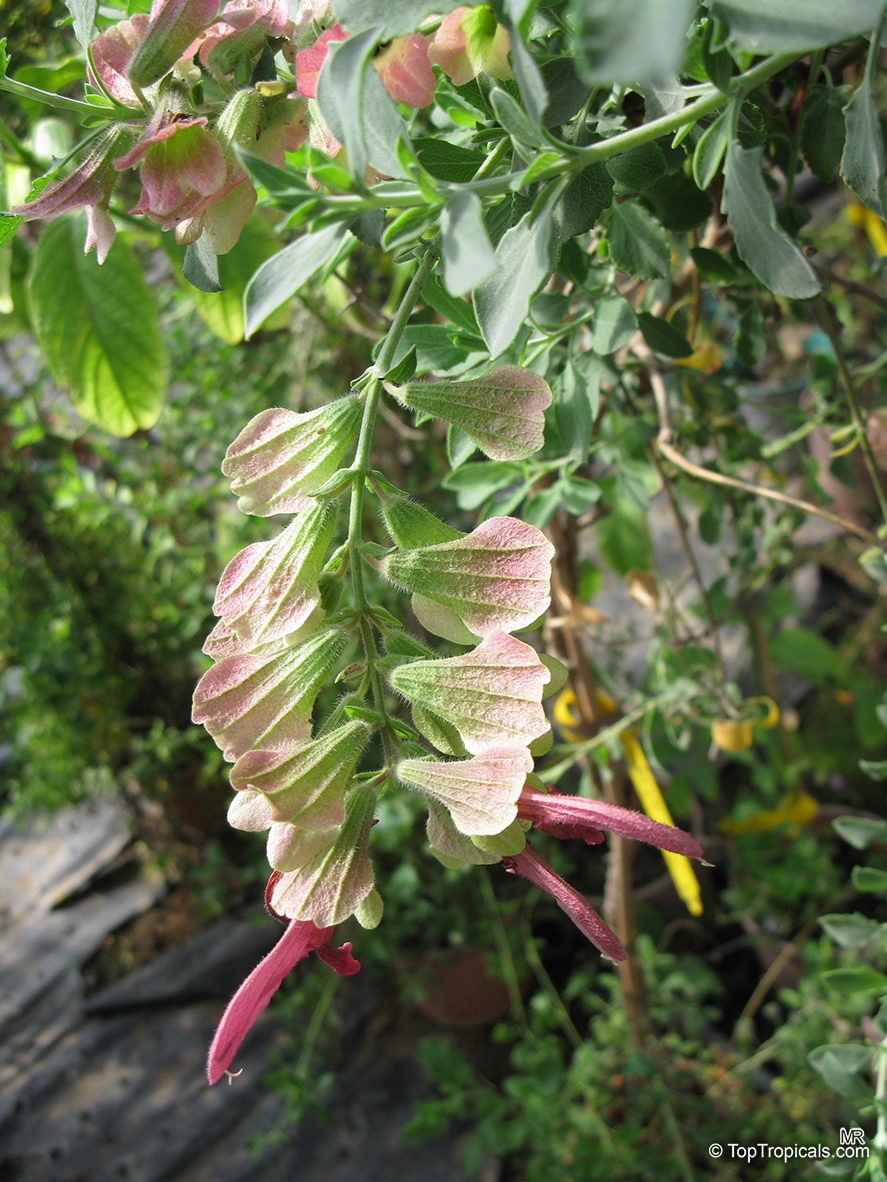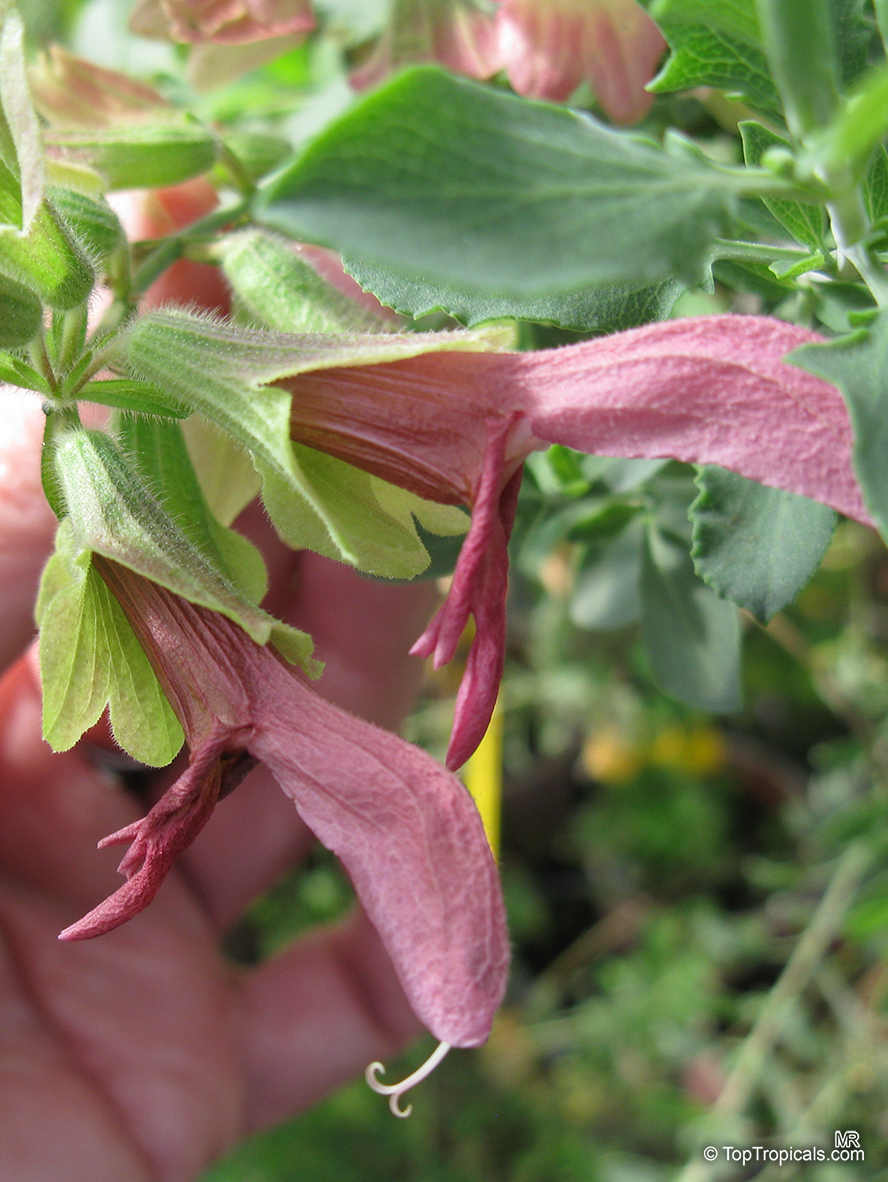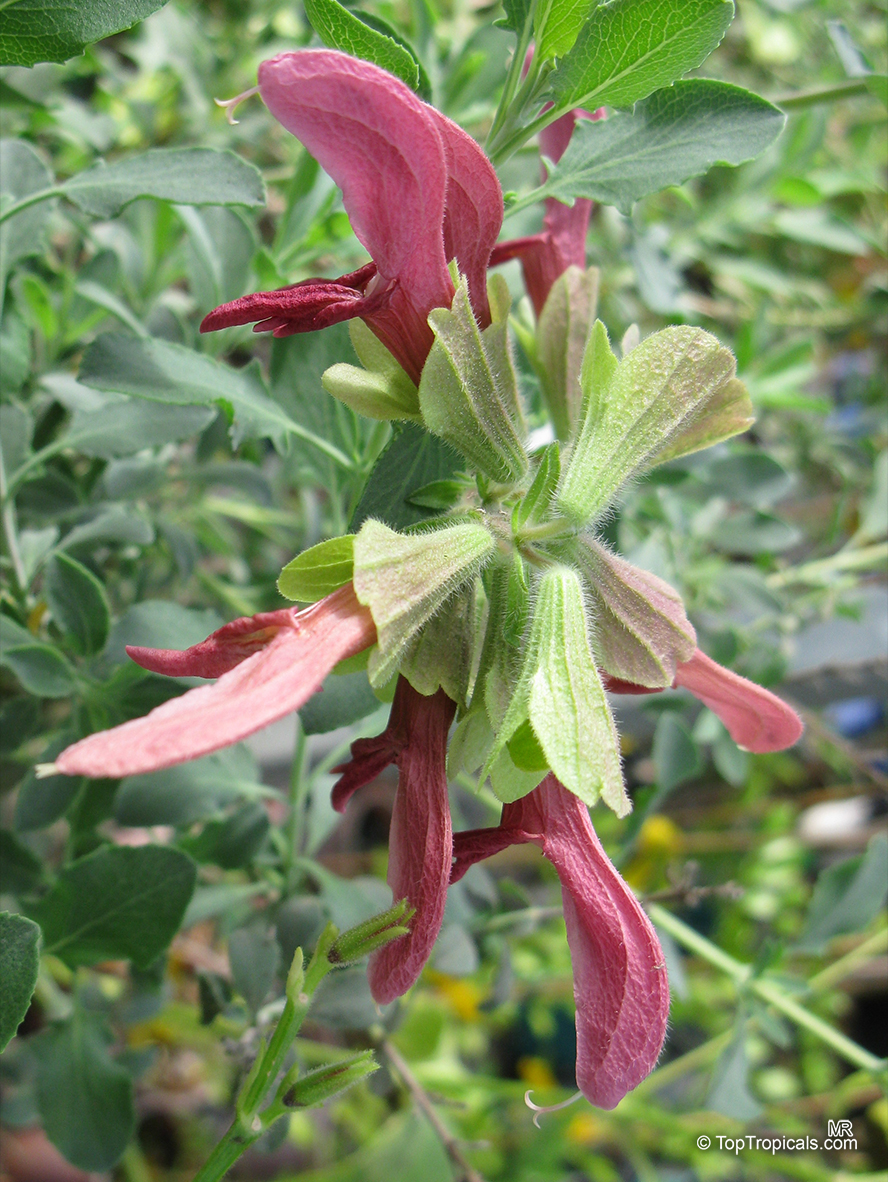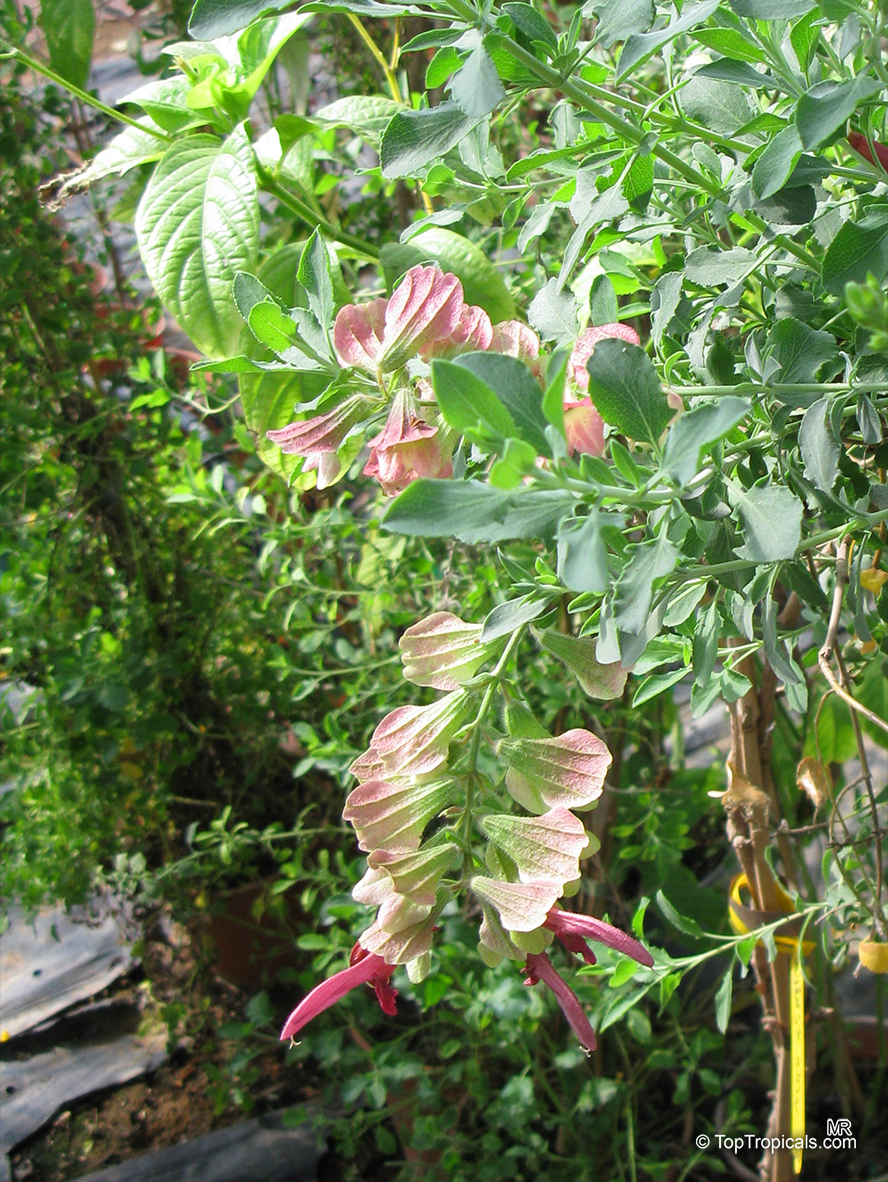Salvia - Plant Encyclopedia Results
Top Tropicals Plant Encyclopedia
| Number of plants found: 28 | Next | 
|
Go to page: | 1 | 2 | 3 |
Botanical name: Salvia argentea
Common names: Silver Sage, Silver Salvia, Hobbits Foot
Family: Lamiaceae
Origin: Mediterranean






Silver Sage (Salvia argentea) grows to only 2-5 feet in height and width, and prefers sunny, dry location with excellent drainage. The plant requires moderate water and, with regular irrigation, should not be allowed to dry out too much. Though many people love Silver Sage because of its ornamental foliage, it does display small white and off-white flowers in mid to late summer.
Plant thrives in USDA Zones 5-9. Care when growing Silver Sage in colder regions involves planting in a pot and bringing it inside for the winter when night temperatures threaten to drop below freezing, using it as an attractive and fragrant source of houseplant for the winter months. The soil should be allowed to almost dry out between waterings, and during the winter months the plant should remain in a cool, bright spot in the home. When Spring arrives water the plant more frequently and move it to a protected, sunny location outdoors. Once the plant is back outside, water pots deeply to encourage new growth.
Silver Sage is an excellent choice for rock gardens and for perennial borders, where it will add silvery-blue foliage to the garden in the Summer months. Plants are best grouped as single specimen or in a clumping mass as a ground cover. It's also a great plant for mass plantings and can also be grown in containers, raised beds and window boxes.
Botanical name: Salvia aurea
Common names: Brown Salvia, Beach Salvia, Dune Salvia, Golden Salvia
Family: Lamiaceae
Origin: South Africa







Salvia aurea is an aromatic, hardy shrub with unusually colored flowers borne over a long period. It is fairly fast-growing, up to 2 m and very attractive to wildlife.
Flowering begins in early spring, and the bright yellow flowers soon fade to rusty-orange and then reddish brown. After the petals fall, the saucer-like calyx, which becomes papery with age, remains as an added attraction. The flowers are both attractive and a curiosity. The flowers contain a lot of sweet nectar which attracts bees and moths, and acts as an essential food supply for sunbirds, particularly when proteas are not flowering. The flowers are complimented by greyish-green, aromatic foliage.
This is an excellent choice for coastal gardens, as it prefers light, well-drained soil and full sun, tolerates strong winds, and is drought resistant. It has been cultivated successfully further inland and upcountry, as it is capable of resprouting from its rootstock it recovers suitably from frost damage, but preferably try to find it a warm sheltered spot in the garden if you live in a frosty area.
For more prolific growth, water well and give it plenty of compost/mulch. Brown salvia is easily propagated by stem cuttings, or seed sown in spring.
The species was once referred to as Salvia afr. lutea (expanded as africana lutea), but this name is now considered obsolete.
Botanical name: Salvia coccinea
Common names: Red Salvia, Tropical Sage
Family: Lamiaceae








Light: Does best in full sun but can tolerate intermittent shade. Moisture: Tolerates drought, but flowering suffers without supplemental watering during dry spells.
Botanical name: Salvia discolor
Common name: Andean Sage
Family: Lamiaceae
Origin: Central America








The leaves, stem and flower buds all exhibit a strong and distinct odour of blackcurrant.
Botanical name: Salvia dolomitica
Common name: South African Sage
Family: Lamiaceae
Origin: South Africa







This small shrub measures between 2 and 5 feet tall and performs best in full sun and moderate water. Salvia dolomitica is a great option for gardeners looking to add both color and fragrant foliage to their landscape. The ornamental foliage of this South African Sage is deep green and will fit any landscaping style. The pink flowers attract numerous butterflies and hummingbirds to the garden.
Planting and Growing Salvia dolomitica is best in the USDA Hardiness Zones 9-11. It is drought tolerant and tolerates a variety of soil conditions. Generally, it is a very low maintenance plant, however, it requires well-draining soil with moderate waterings. Pruning may be necessary in order to keep the shape of the plant and encouraging more flowering.
For those who live in cooler climates, this plant can be grown in a pot with some caution. To help protect it from the cold temperatures, the pot should be placed in an area of the garden that receives full sun and has some protection from the wind. The pot should also be filled with a fast-draining soil, and during winter, the soil should be kept slightly moist. Mulch around the plants will also help to protect the roots during colder weather. With the proper care and protection, Salvia dolomitica is sure to bring many years of beauty to the garden.
Botanical name: Salvia elegans
Common names: Pineapple Sage, Pineapple Scented Sage
Family: Lamiaceae












Pineapple sage grows naturally in oak and pine scrub forests at elevations from 8,000-10,000 ft in Mexico and Guatemala.
Pineapple sage is rarely grown from seed. Tip cuttings taken in spring are easy to start.
The fresh leaves of pineapple sage are used in fruit salads and drinks. Crush a few fragrant leaves into hot or iced tea for a flavorful treat. The delicious flowers add color and flavor to salads and deserts.
Botanical name: Salvia farinacea
Common name: Mealy Sage
Family: Lamiaceae
Origin: Mexico








Violet-blue spikes rest on a compact plant of typically narrow salvia-like leaves; however, the shiny leaves are what set this species apart from most other Salvia, which bear velvety-dull leaves. Cultivars are available in various shades of blue, purple, lavender, white and bicolor.
Botanical name: Salvia guaranitica
Common names: Anise-scented Sage, Hummingbird Sage
Family: Lamiaceae
Origin: South America









The small shrubs reach heights between 2-5 feet.
Salvia guaranitica is a small shrub native to South America, with fragrant ovate leaves with a fresh mint green color, and an anise scent when crushed. The flowers are a unique mix of blue, lavender, and purple shades, attracting butterflies and hummingbirds.
This small shrub should be planted in full sun or semi-shade locations and watered regularly. Salvia guaranitica can handle moderate water but will benefit from regular irrigation. Mature plants have proven cold hardy at least to mid 20s F for a short time and should be grown in USDA Zone 8-10.
When planting Salvia guaranitica in cold regions, pot it and select the warmest location you can find for it. Move it in when the temperature drops below freezing and move it back out when temperatures rise to the minimum hardiness rank. When bringing it in, make sure to keep it well-watered, as it's harder for the plants to get water when they are indoors in containers. During the colder months, ensure that it gets plenty of light and never let it sit in a waterlogged environment.
Botanical name: Salvia hispanica
Common name: Chia
Family: Lamiaceae
Origin: Mexico, Guatemala











Chia was cultivated by the Aztec in pre-Columbian times, and was so valued that it was given as an annual tribute by the people to the rulers. It is still used in Mexico and Guatemala, with the seeds sometimes ground, while whole seed is used for nutritious drinks and as a food source. The word chia is derived from the Nahuatl word chian, meaning "oily". The present Mexican state of Chiapas received its name from the Nahuatl "chia water or river."
Chia seed may be eaten raw as a whole seed and is an excellent source of omega-3 and dietary fiber (both insoluble and soluble). Ground chia seed is sometimes added to pinole, a coarse flour made from toasted maize kernels. Chia seeds placed in water or fruit juice is consumed in Mexico and known as chia fresca. The soaked seeds are gelatinous in texture and are used in gruels, porridges and puddings. Ground chia seed is used in baked goods including breads, cakes and biscuits.
Chia sprouts are used in a similar manner as alfalfa sprouts in salads, sandwiches and other dishes.
Botanical name: Salvia lanceolata
Common names: Rusty Sage, Lance-leaf Sage
Family: Lamiaceae
Origin: South Africa







Salvia lanceolata is suitable as a specimen plant or used in an informal shrub border.
| Next |  |
Use link to repeat this search:
https://toptropicals.com/cgi-bin/garden_catalog/cat.cgi?find=Salvia&search_op=and&keyword_op=and&language=e&number=10
&no_change_lang=1&user=tt&sale=1&first=0
